I first showed an interest in Sundials when I was quite little.
The Rectory, Godstone, U.K. in 1950. The Author, on the left, with brothers and sister. My brother Andrew is sitting on the sundial. I think that the gnomon is the triangular thing on the bottom right of the picture. It is not surprising that the sundial was usually wrong.
WORKING LIFE
I left Cambridge University with a Masters Degree in Natural Sciences. After 2 years as a Voluntary Service school master, teaching science in Borneo, I joined the Oil Industry.
Serious interest in Sundials came when I was working on the island of Lavan (Sheikh Shoeyb) in the Persian Gulf. The island is now a major oil export terminal. But then it was just sand and a small Italian oil exploration camp. It was a dreadful empty sandy place, more-or-less permanently shrouded in a hot humid mist. I spent a year there - no women and no entertainment - other than drinking, poker or dirty movies. So, I studied astronomy and my serious interest Sundials was kindled.
I was aided by my uncle John Wigham Richardson - who, in a series of letters, first introduced me to the maths involved in the Equation of Time. Uncle John was not the only family member interested in gnomonics. My great grandfather, John Wigham Richardson, wrote the Appendix to the second edition of Mrs Gatty's Book of Sundials.
I retired from the Oil business and for for 8 years, I served as a Magistrate in South Wales and thus am entitled to call myself a Justice of the Peace.
I am currently part-time employed giving occasional courses in laser cutting at Cardiff Metropolitan University. For this, I hold an infamous zero-hours contract : I will do what they want, when they want, how they want. In return for which, they guarantee me nothing and pay me a pittance when they do want something. But I do get to use all their equipment.....
On retirement, I joined both the British & North American Sundial Societies & the Antiquarian Horological Society. And became became more seriously interested.
LECTURING WORK
From 2010 - 2018, I have an accredited lecturer to the Arts Society (formally National Association of Decorative & Fine Arts - NADFAS). For this and other organisations, I have given 270 lectures called "The Life and Times of the Sundial" and "How Time has been told through the Ages" about sundials and the history of time-telling. I have lectured widely in the UK, Australia, New Zealand and occasionally in the US. The attendance at these lectures is anywhere between 60 to 350 people, so a lot of people know a little more about sundials.
OTHER WORK
I do the delineation for the Spot-On Sundials, a company owned by my friend Piers Nicholson, http://spot-on-sundials.co.uk
MY DIALS
I make the occasional sundial for family and friends.
Cavendish Road, Chiswick - Lakeland Slate - 2009 - designed by the author, carved by Jane Turner of Abergavenny
Now as a matter of principle, I will only make dials that are provide with a correction to Civil Mean Time. I do this because I think that there is nothing worse than having children abandon a sundial because it cannot be shown to tell the same time as their phone or watch

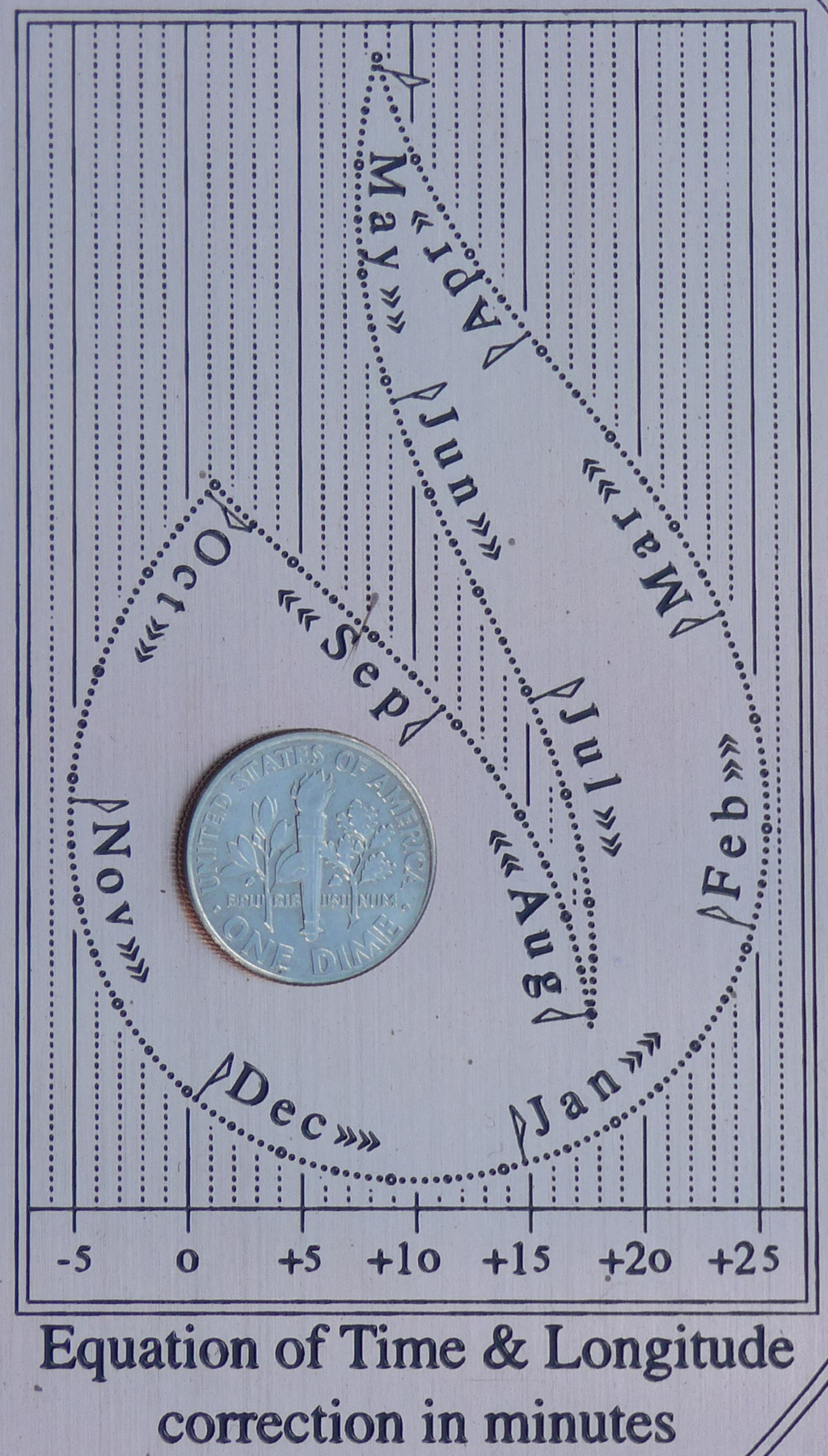
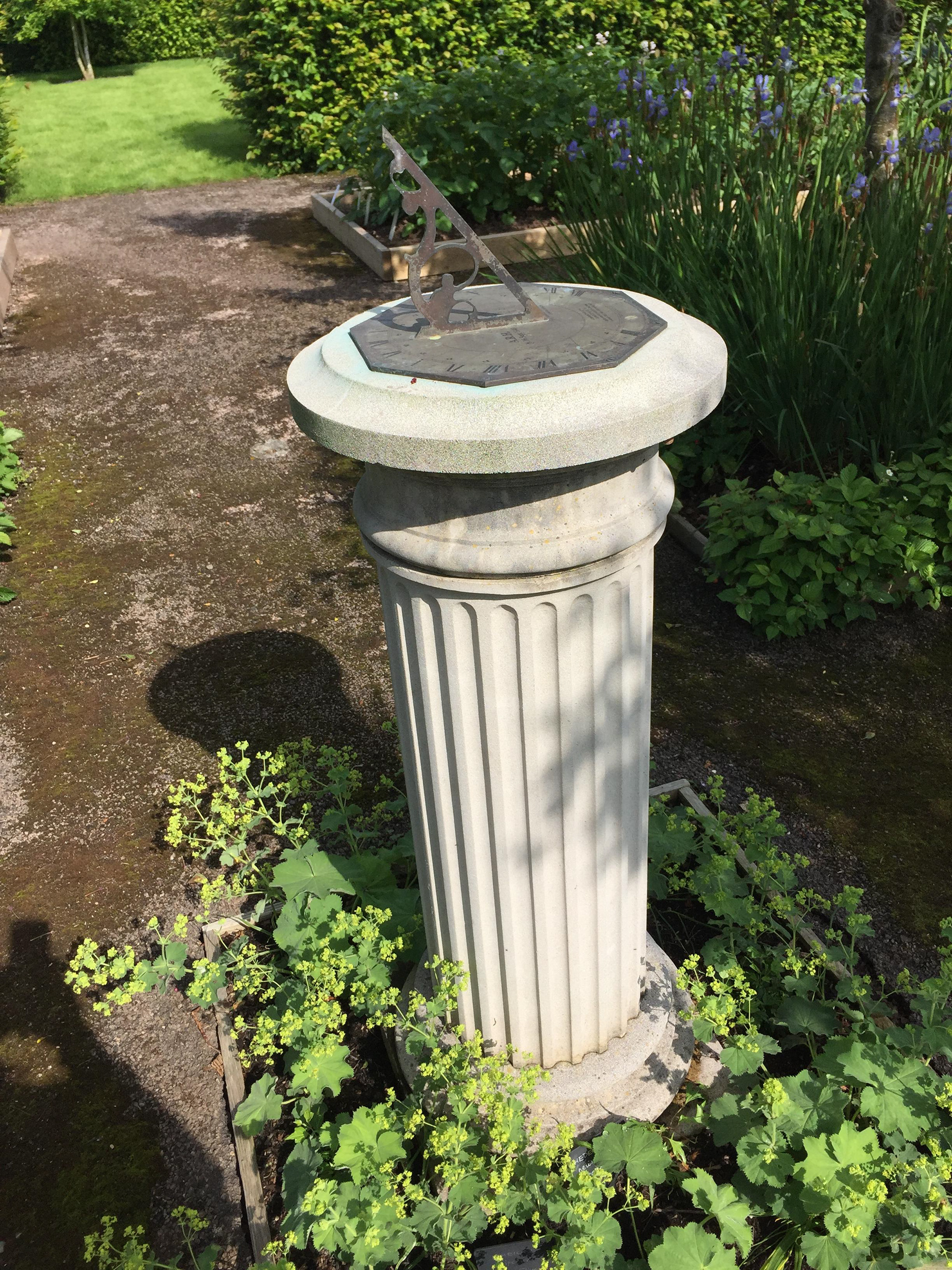

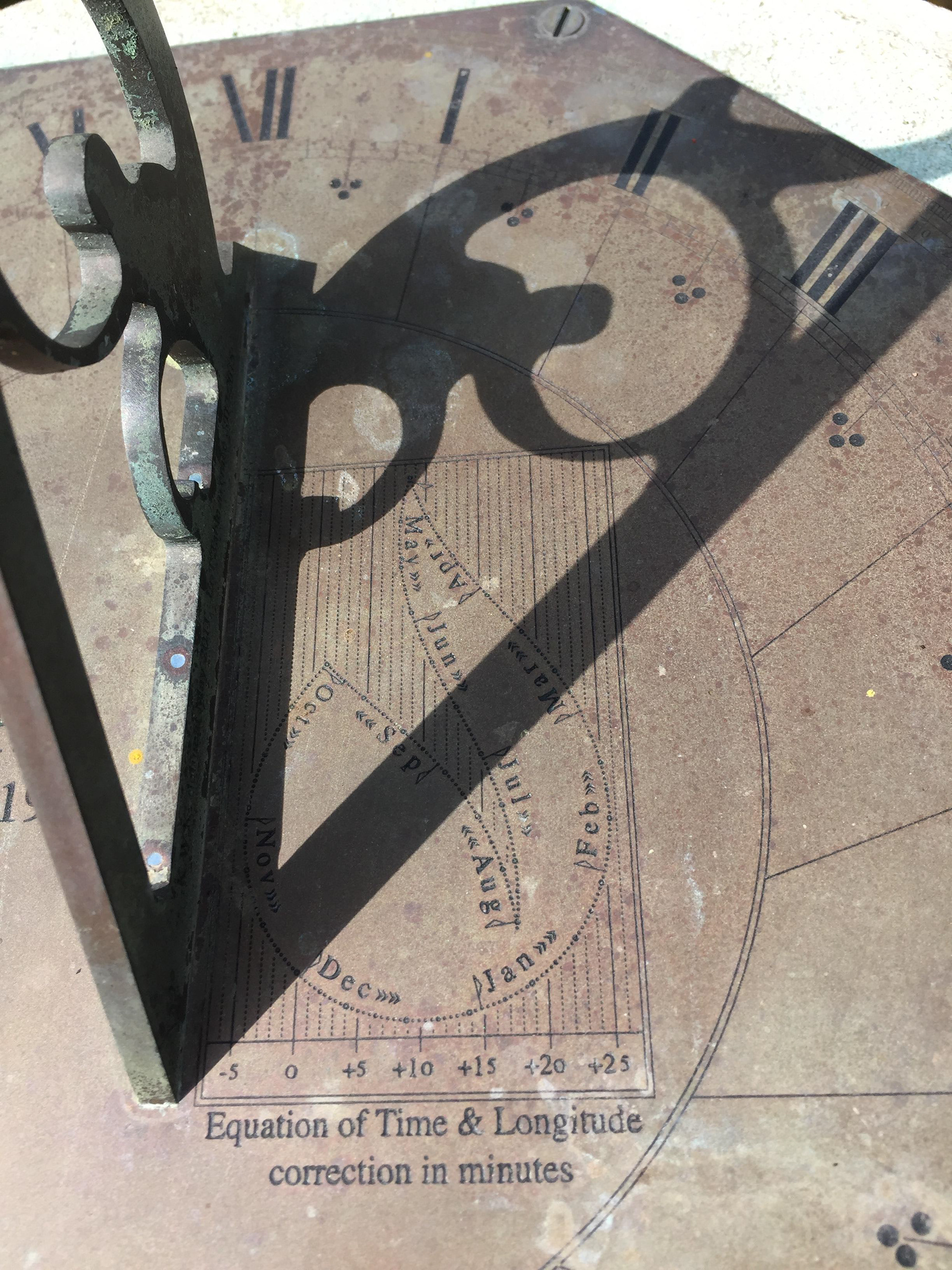
Thruxton Rectory Anniversary dial with the author's Flame intrinsic EOT correction.
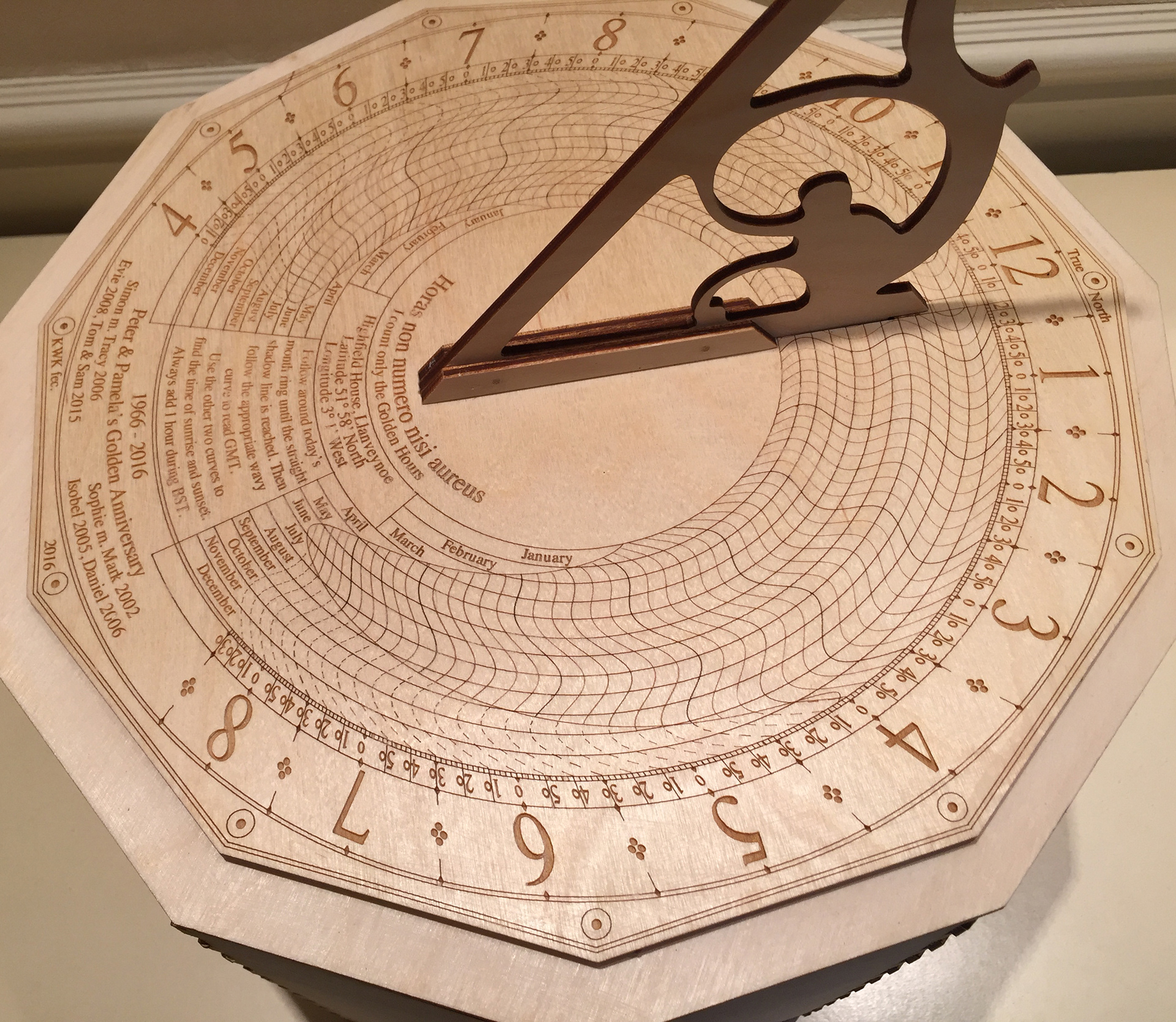
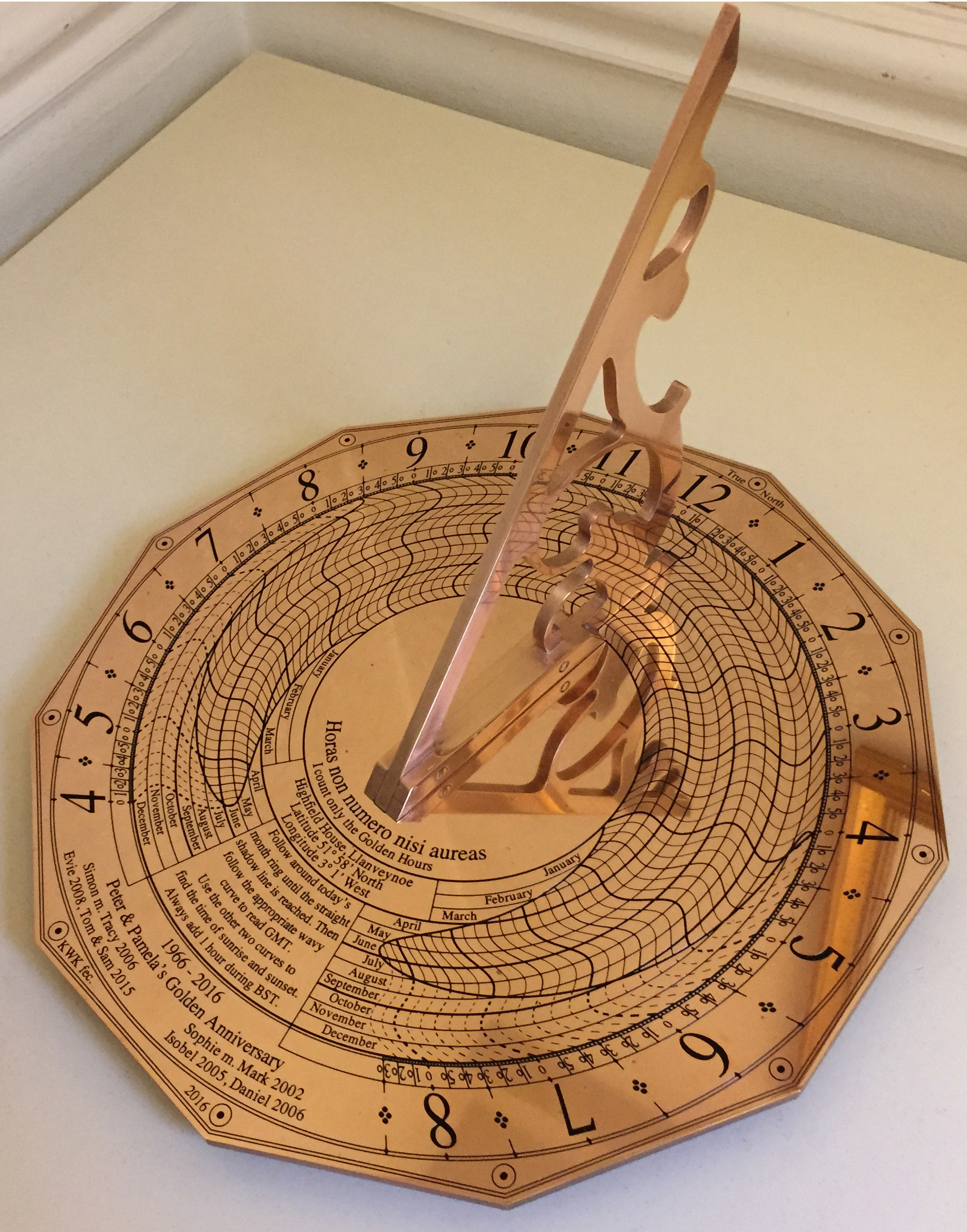
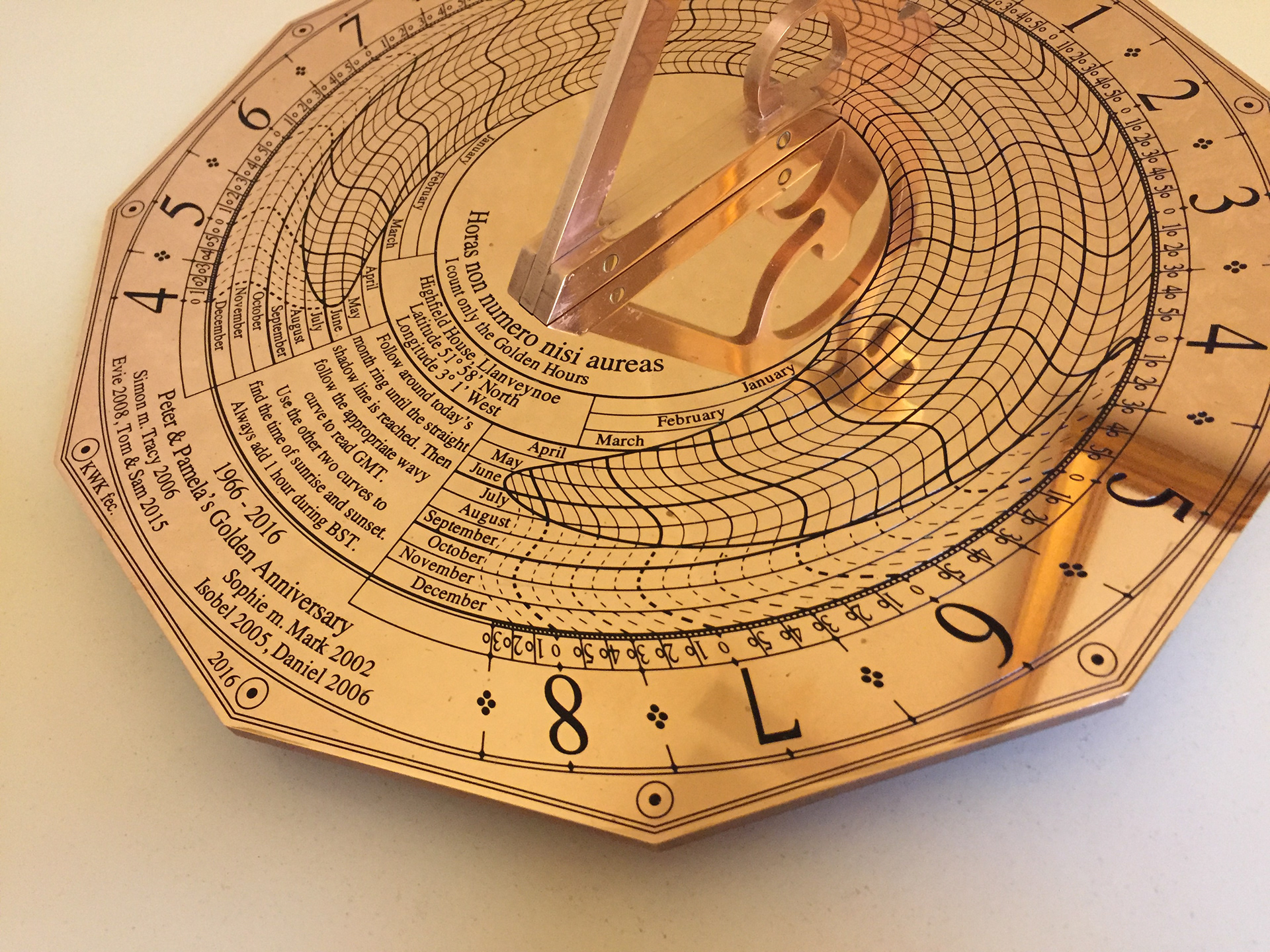
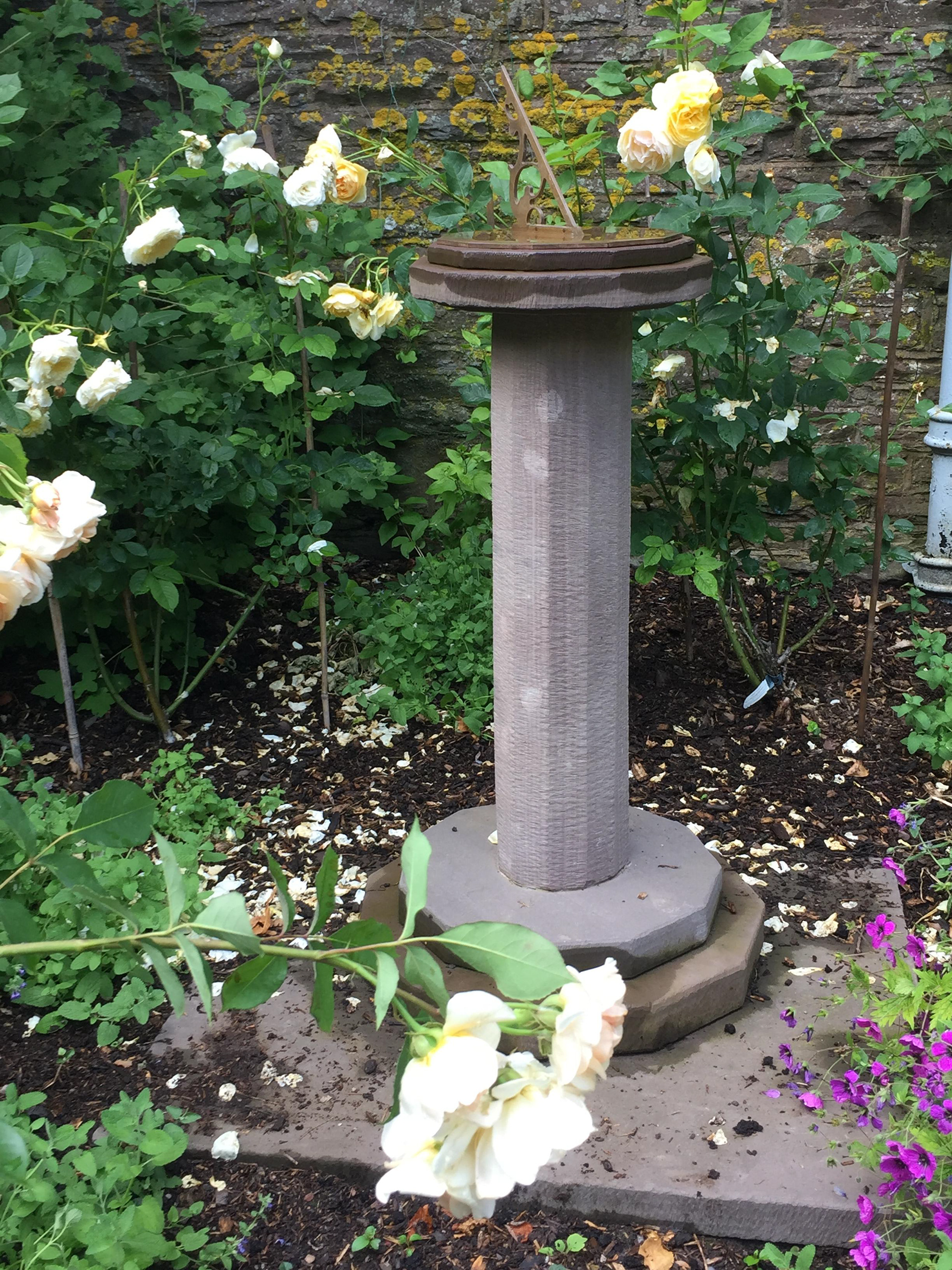
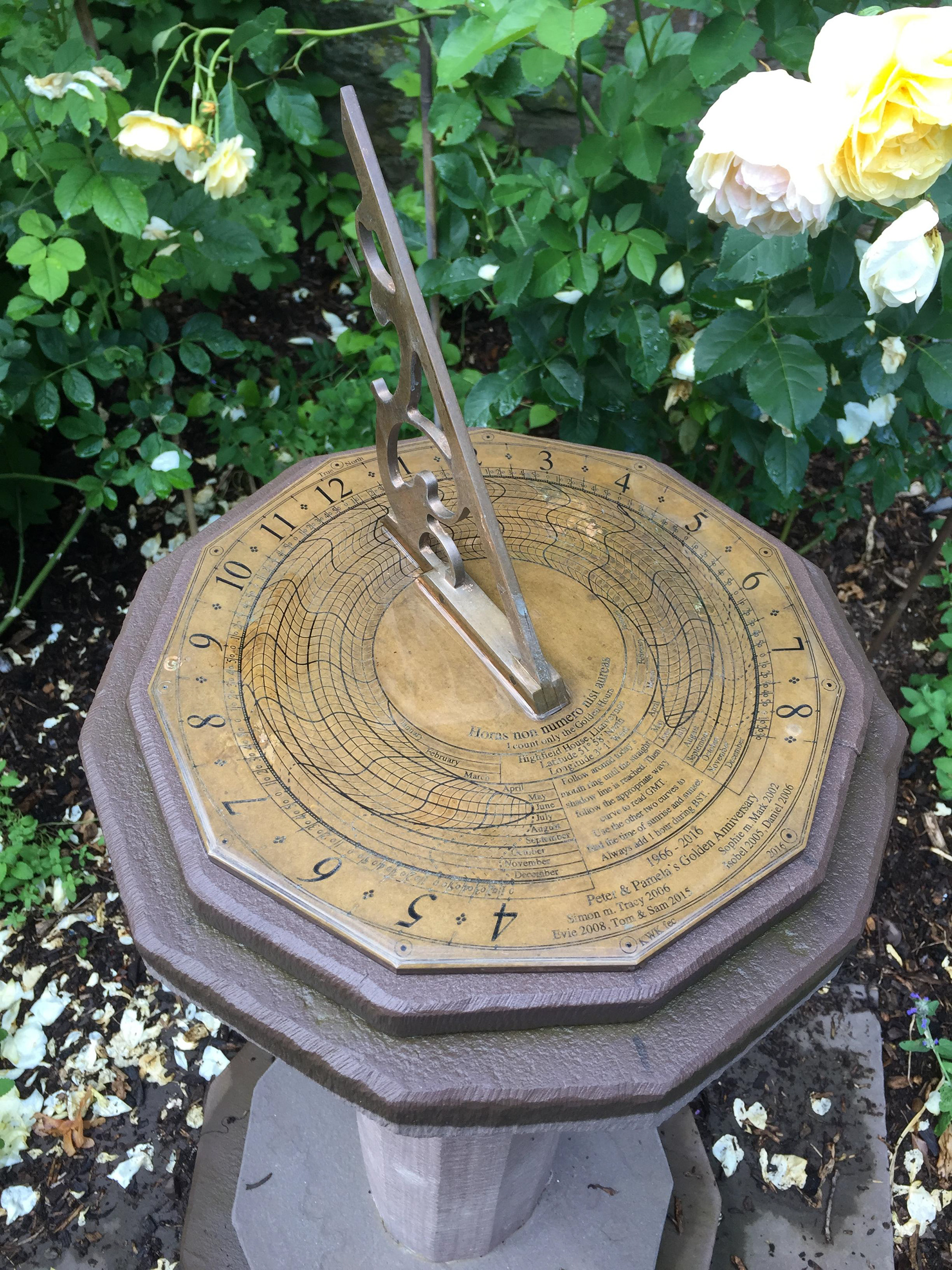
The Highfield Golden Wedding Aniversary Spider Mean Time dial (i) Plywood laser-engraved maquette, used to check the design (ii - iii) Before exposure to the atmosphere (iv - v) Two years later
I do all my design programatically. I love doing this. The graphics needed for Highfield dial (above) were produced with some 2000 lines of Python programming code.
LASER CUT DIALS
The Laser cutter is perfect for making dial maquettes.
Not always successful....
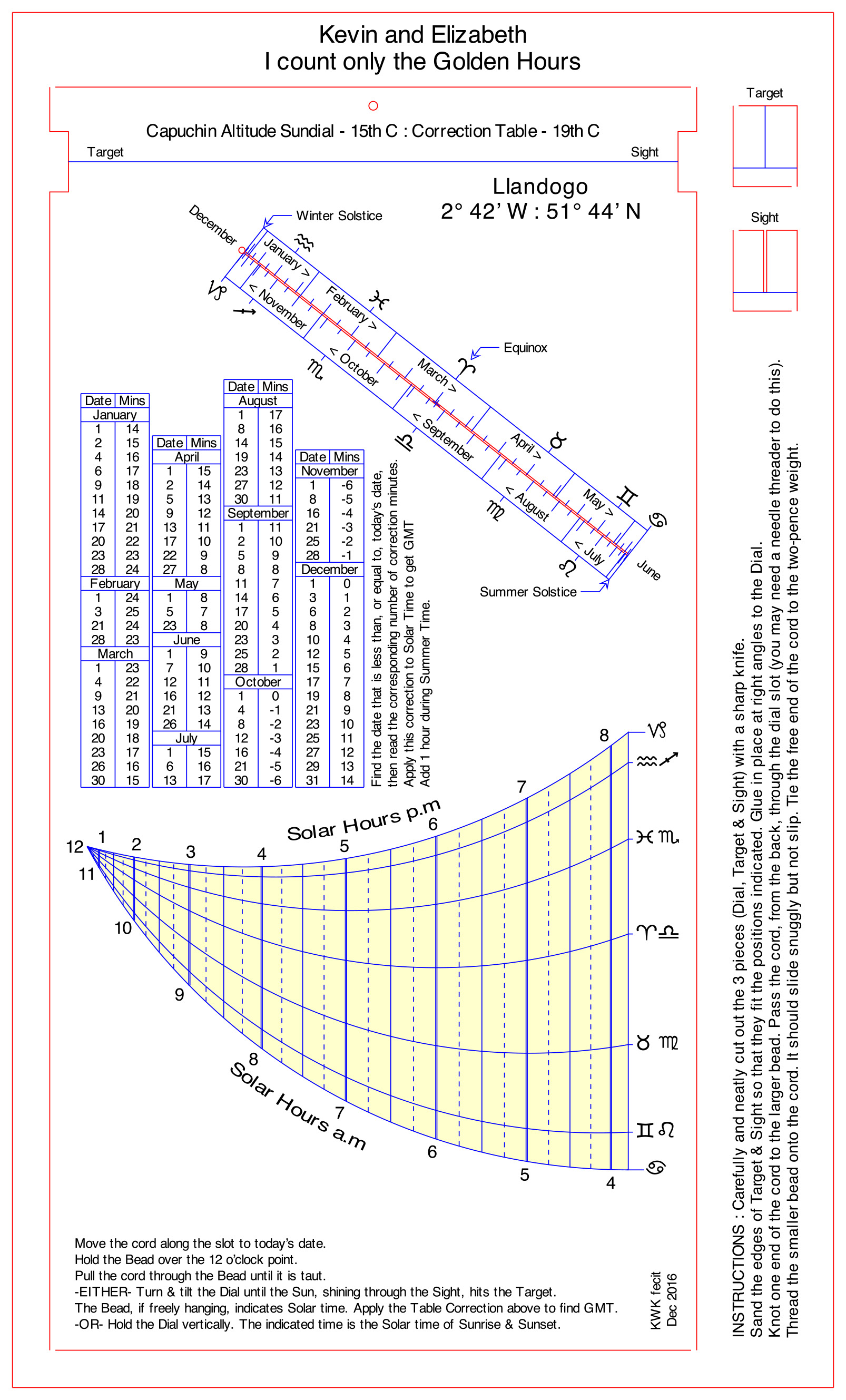
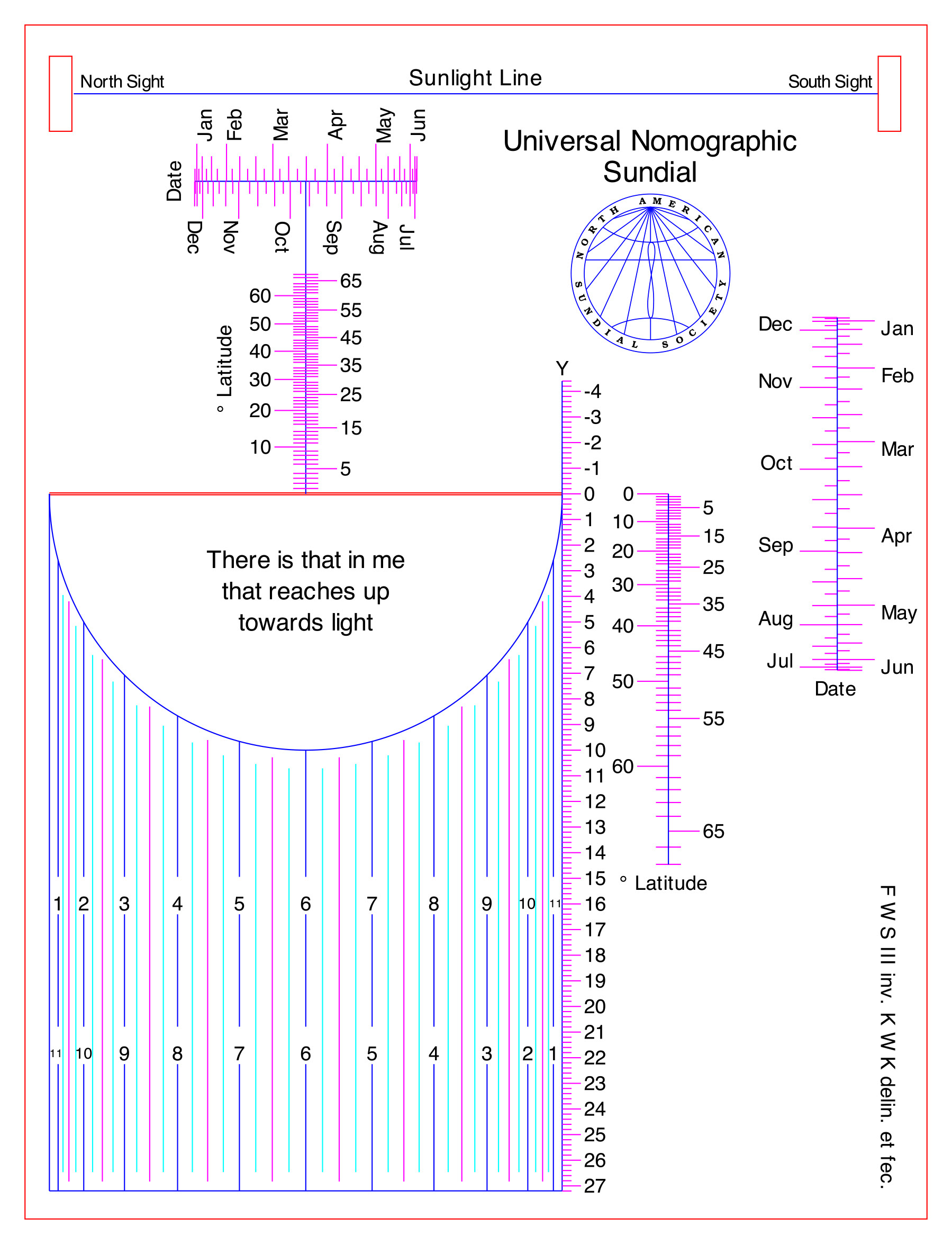

Left to Right : Click to enlarge : (i) Laser Cut Capuchin Dial with Victorian Longitude adjusted Equation Table (ii & iii) Sawyers's Universal Nomographic Dial made for 2016 NASS conference attendees.
FONT WARPING
I have developed a method to ensure that all the numerals and embellishments on the dial are exactly warped so they point the appropriate side of the gnomon foot.
For aesthetic and practical reasons, the Hour Numbers on a sundial should be skewed so they point toward the appropriate side of the foot of the gnomon. Using a graphics application such as Adobe Illustrator to produce such skewing is imprecise and tedious. However, a Python graphics package like NodeBox, which draws according to programming instructions, can do the job repetitively and precisely. This example shows how NodeBox allows a character string to be transformed with total precision. Simple font transformations can be done by applying the transformation (rotations, scaling, translations or skewing) equally to the Bezier points a character or dial ornament. However, complex transformations on Bezier controls, particularly with tightly serifed fonts, can lead to weird results. Moreover, most standard transformations leave straight lines as straight lines. In this application, both the character string’s Bezier curves and straight line segments are split into any number of very small straight segments, which are then subject to the complex transformations. For my dials, all numbers, large and small - as well as all the small ornamentations - were transformed in this way.
The method ensures that all the numerals and embellishments on my dials are exactly warped so they point the appropriate side of the gnomon foot.
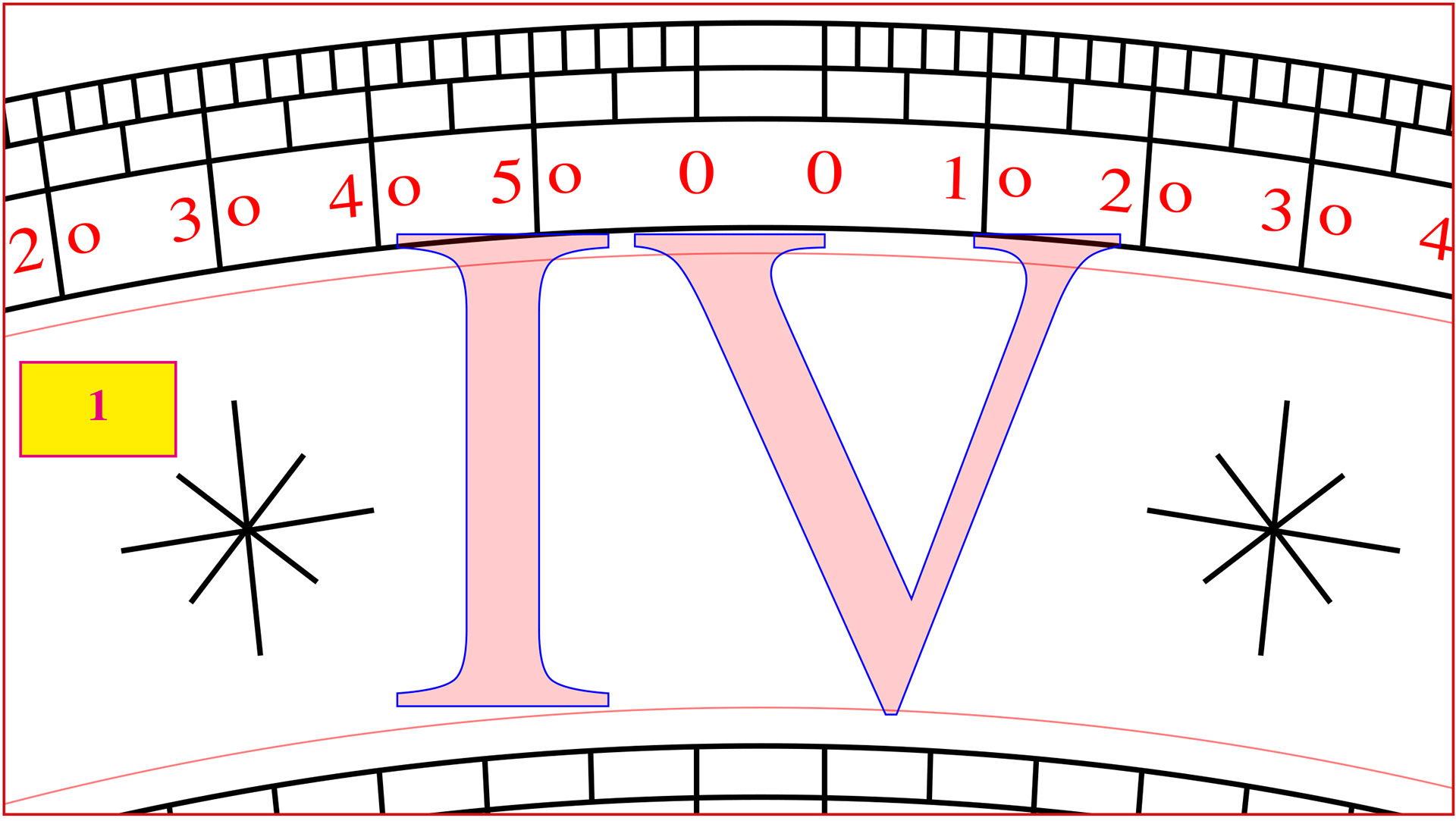
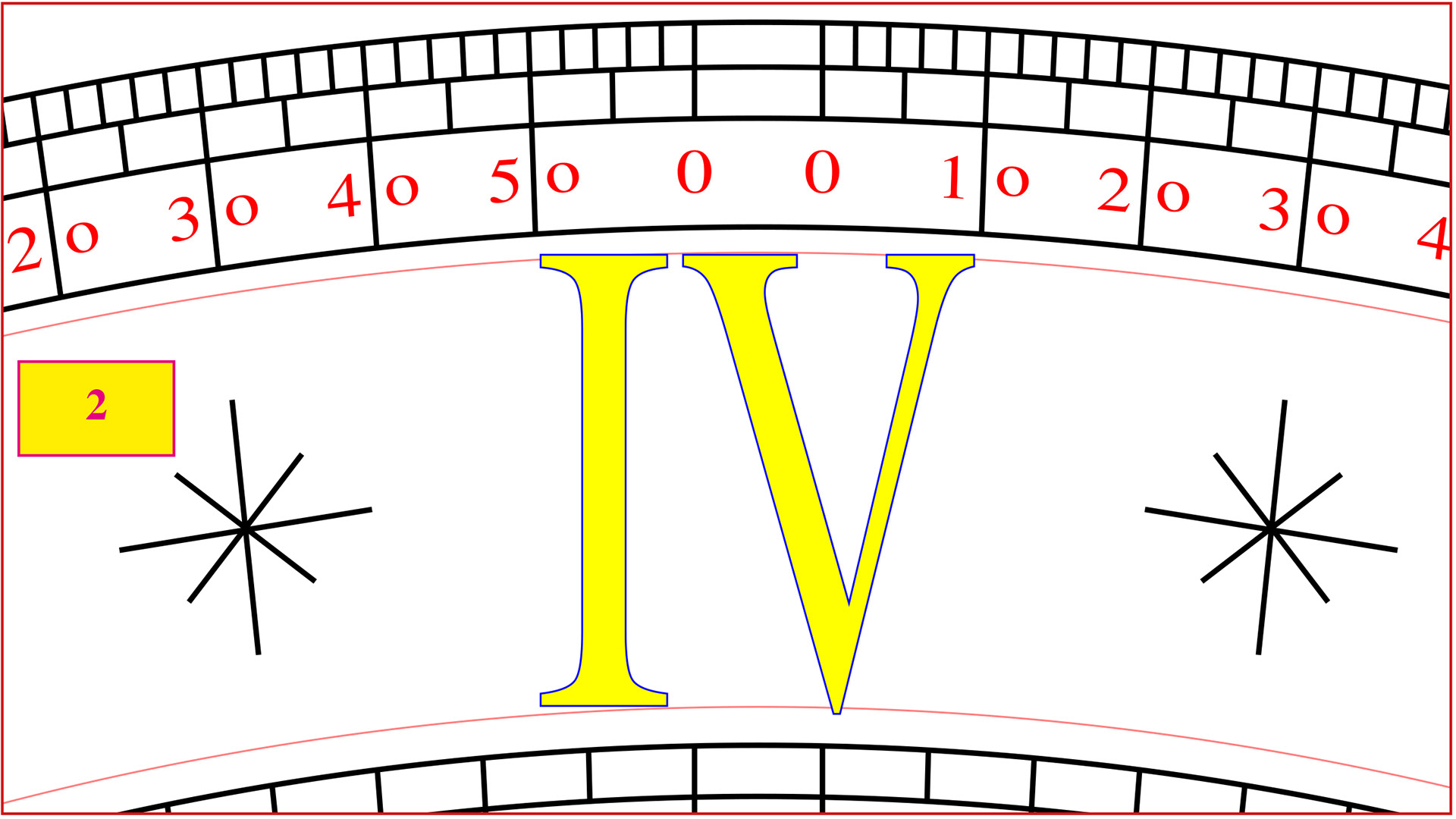

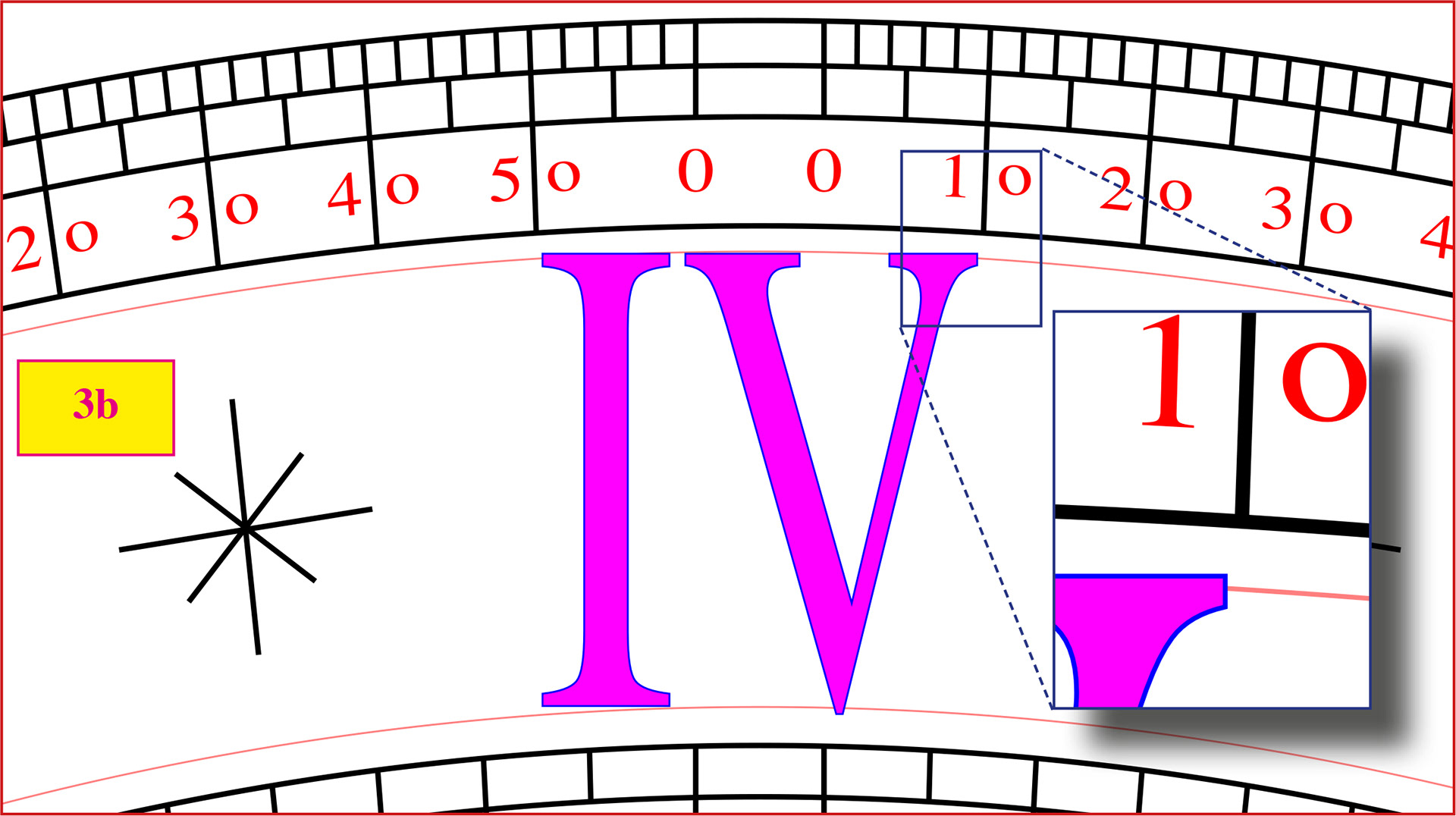


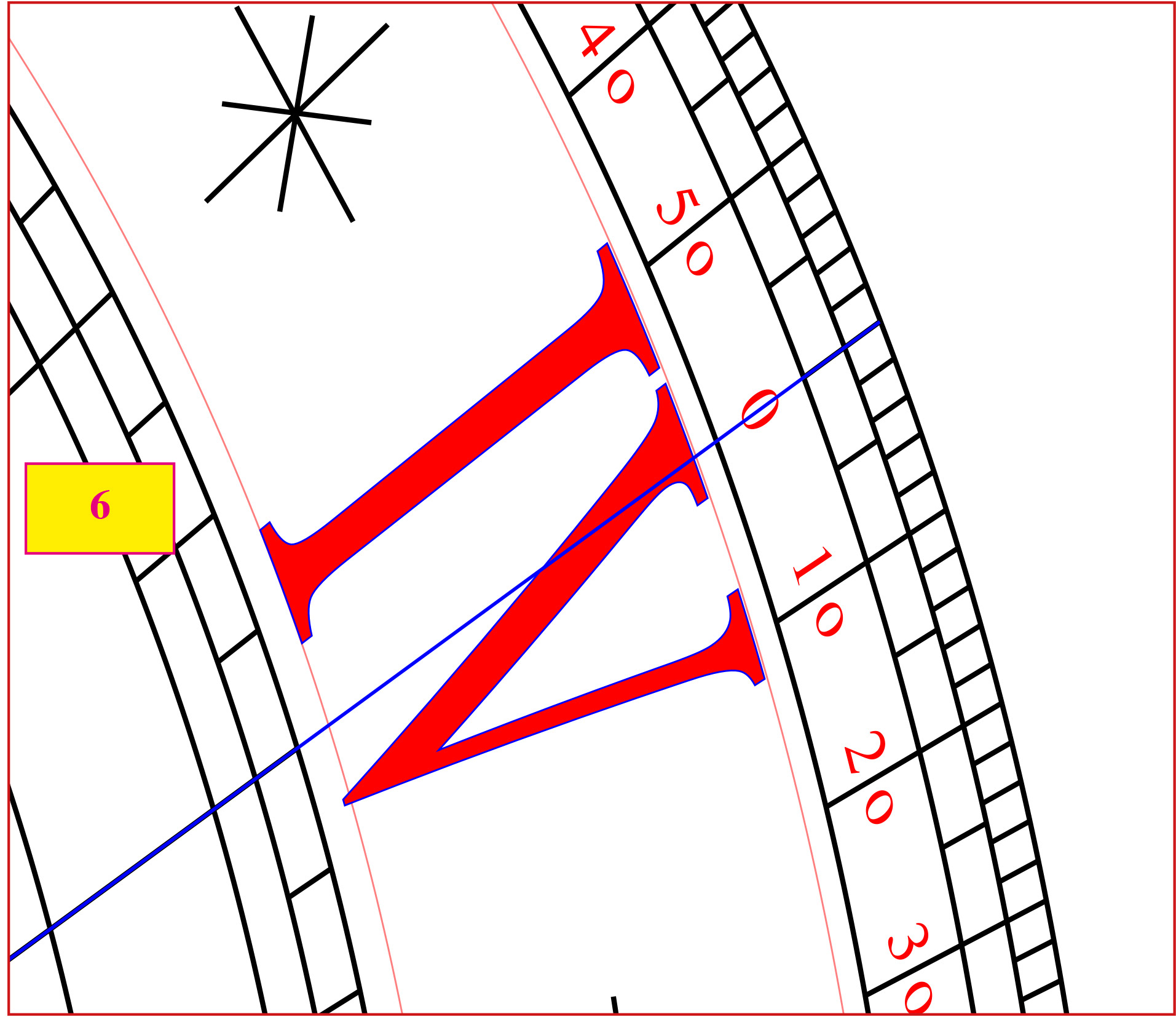
There are 6 steps in the transformation:
Step 1 Original Text (or it could be any drawing path).
Step 2 Simple Linear squeezing or skewing of the character's Bezier control points, to perform any narrowing or italicisation of the characters.
Step 3a Font Bezier curves are converted to single straight line segments (just for illustrative purposes) - see inset.
Step 3b Font Bezier curves are converted to multiple straight line segments (and appear as curves) - see inset - and appear once more as curves
Step 4 Font points previously ‘linearized’ are ‘circularized’ so that ....
(a) originally vertical lines point to the centre of the dial,
(b) originally horizontal lines curve around circles - see inset.
The character string now ‘points’ towards the centre of the dial.
(a) originally vertical lines point to the centre of the dial,
(b) originally horizontal lines curve around circles - see inset.
The character string now ‘points’ towards the centre of the dial.
Step 5 A simple rotational transformation to bring the mid point of the character string in line with the appropriate hour line of the dial.
Step 6 A complex slant transformation so that ....
(a) previously radial lines point towards the foot of the gnomon,
(b) segments previously on the circumference of a circle are maintained on the original circle, but shifted along it by (a) above.
(a) previously radial lines point towards the foot of the gnomon,
(b) segments previously on the circumference of a circle are maintained on the original circle, but shifted along it by (a) above.
MY SUNDIAL COLLECTION
These are the dials - mostly insignificant and mostly cheap replicas - the majority of which I took on my lectures in order to illustrate the diversity that occurs in Sundial design.

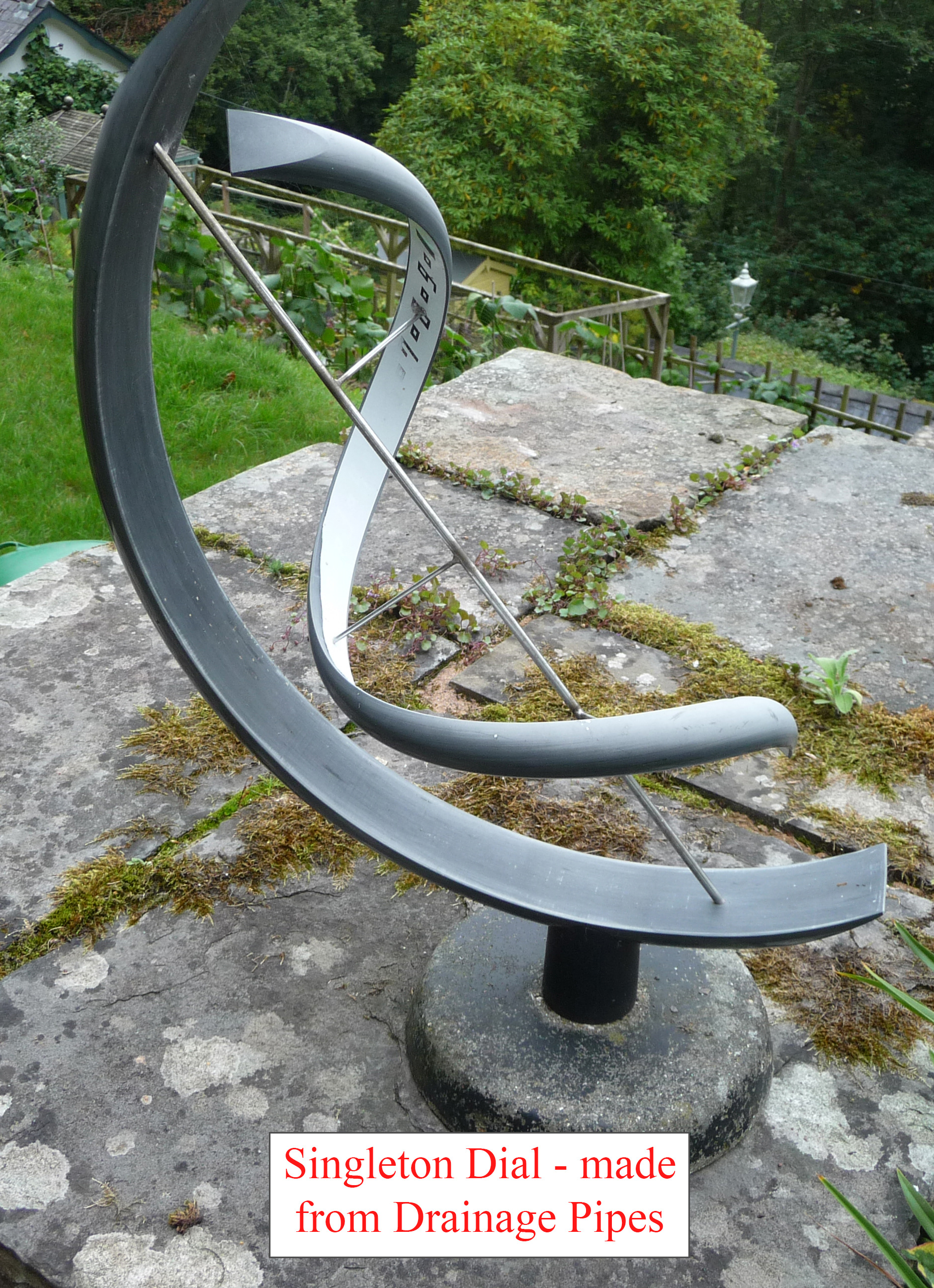
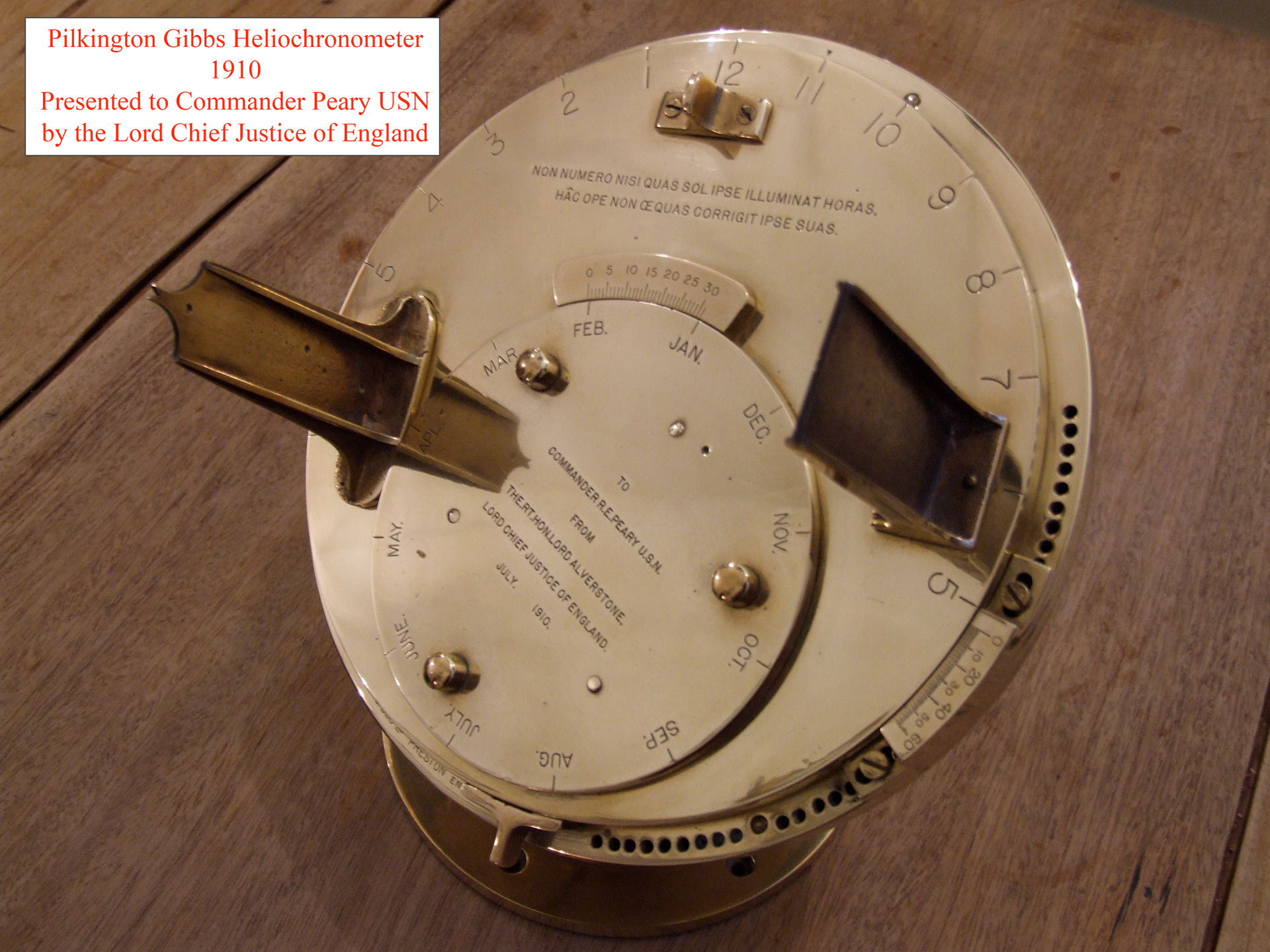

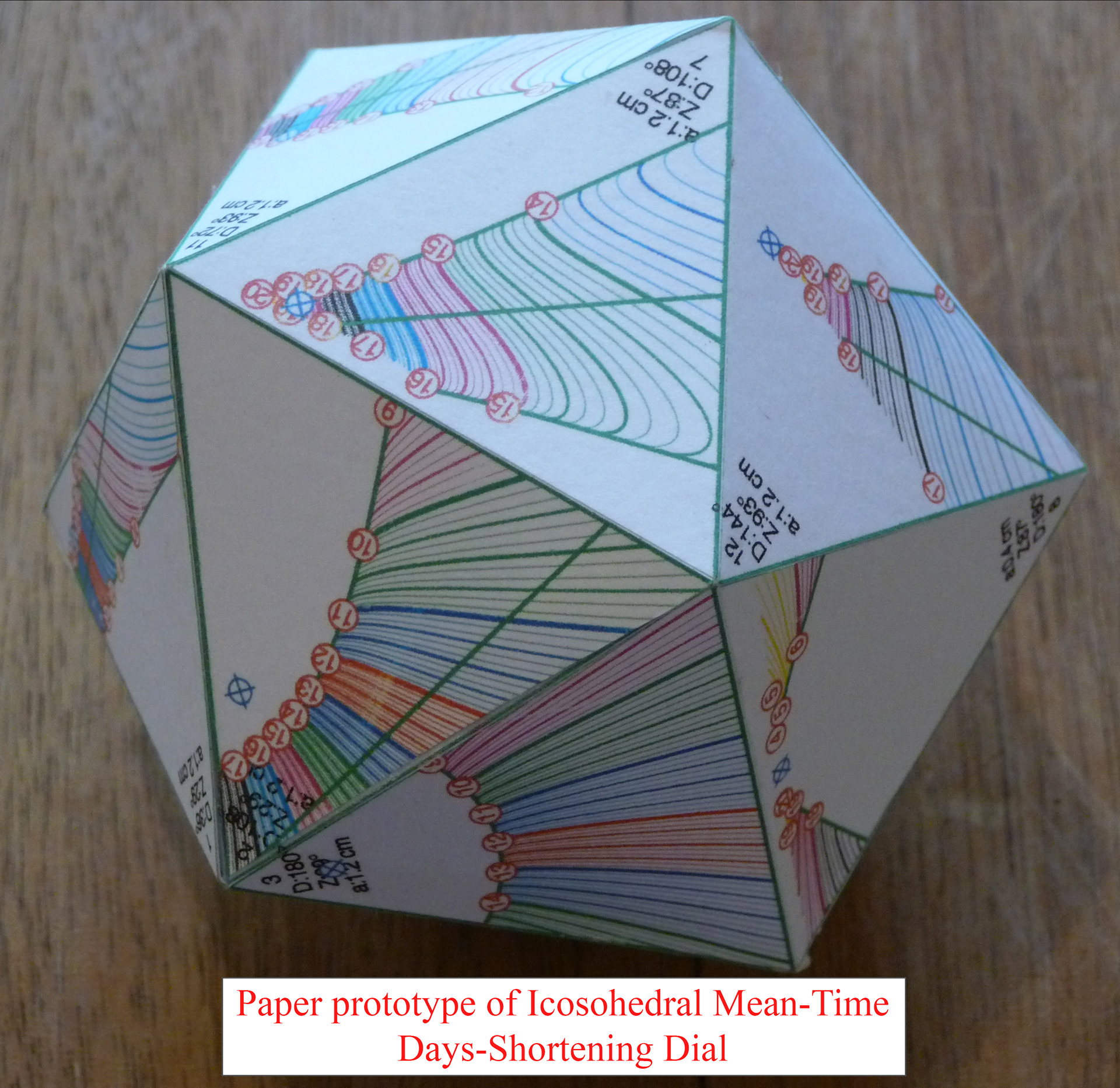
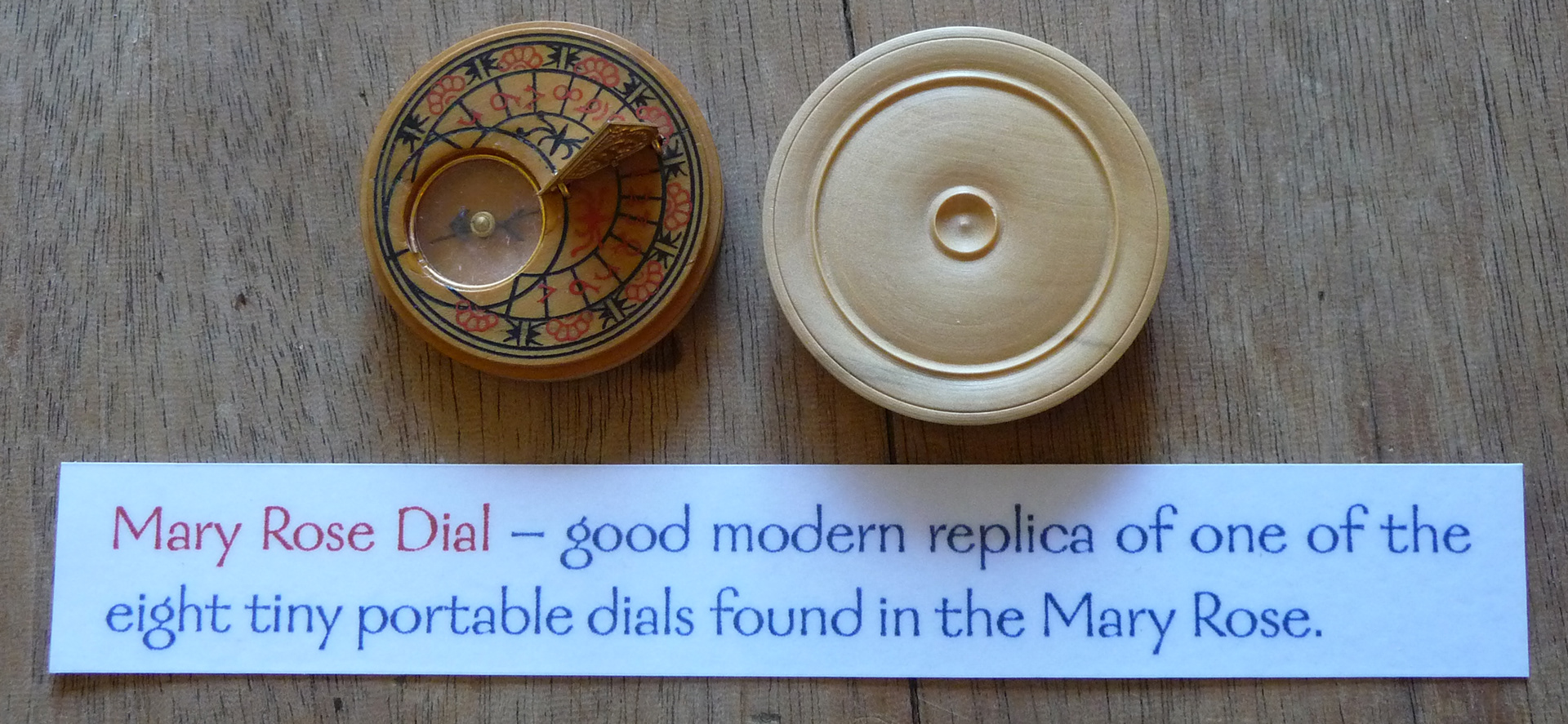
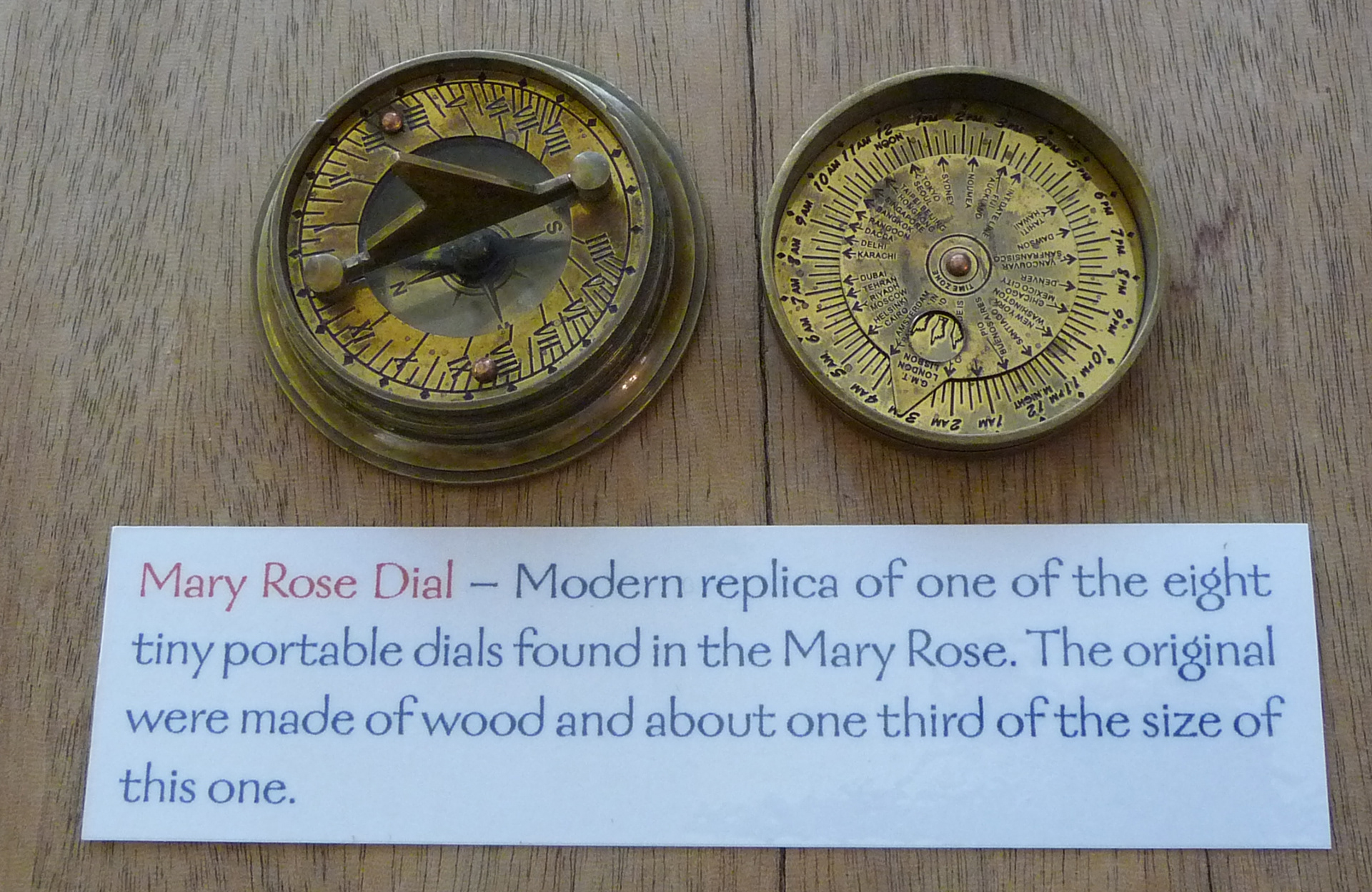

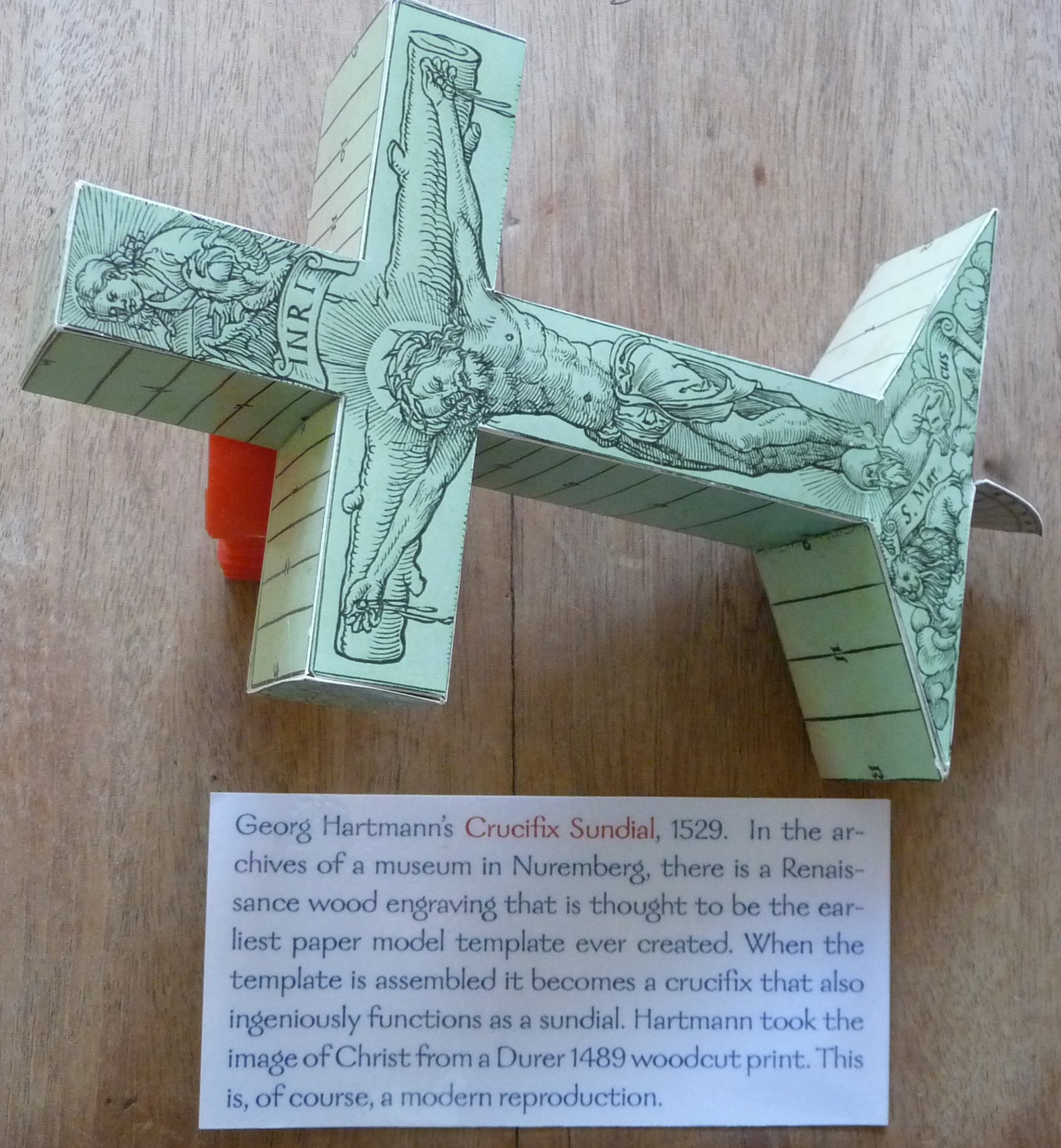

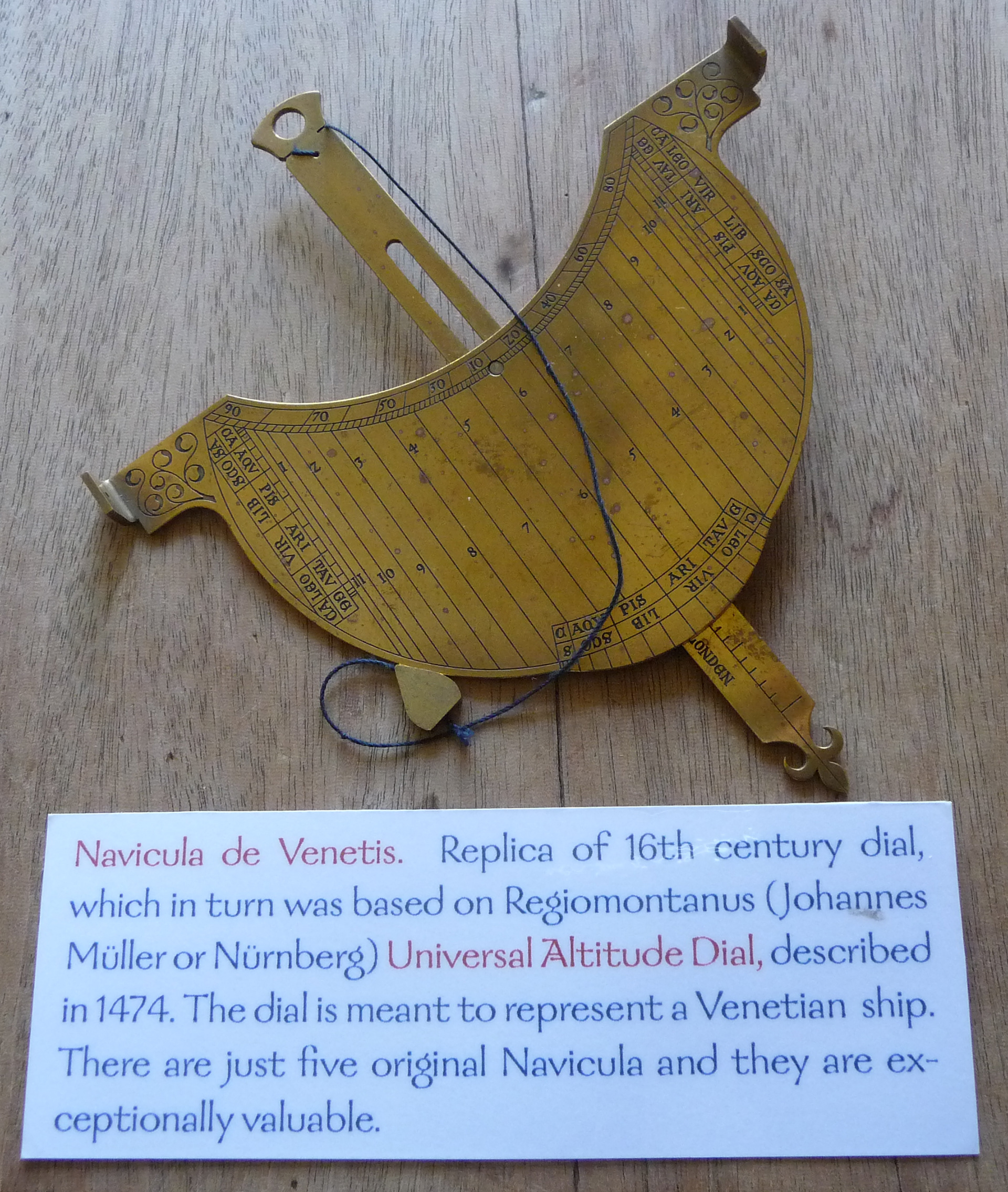
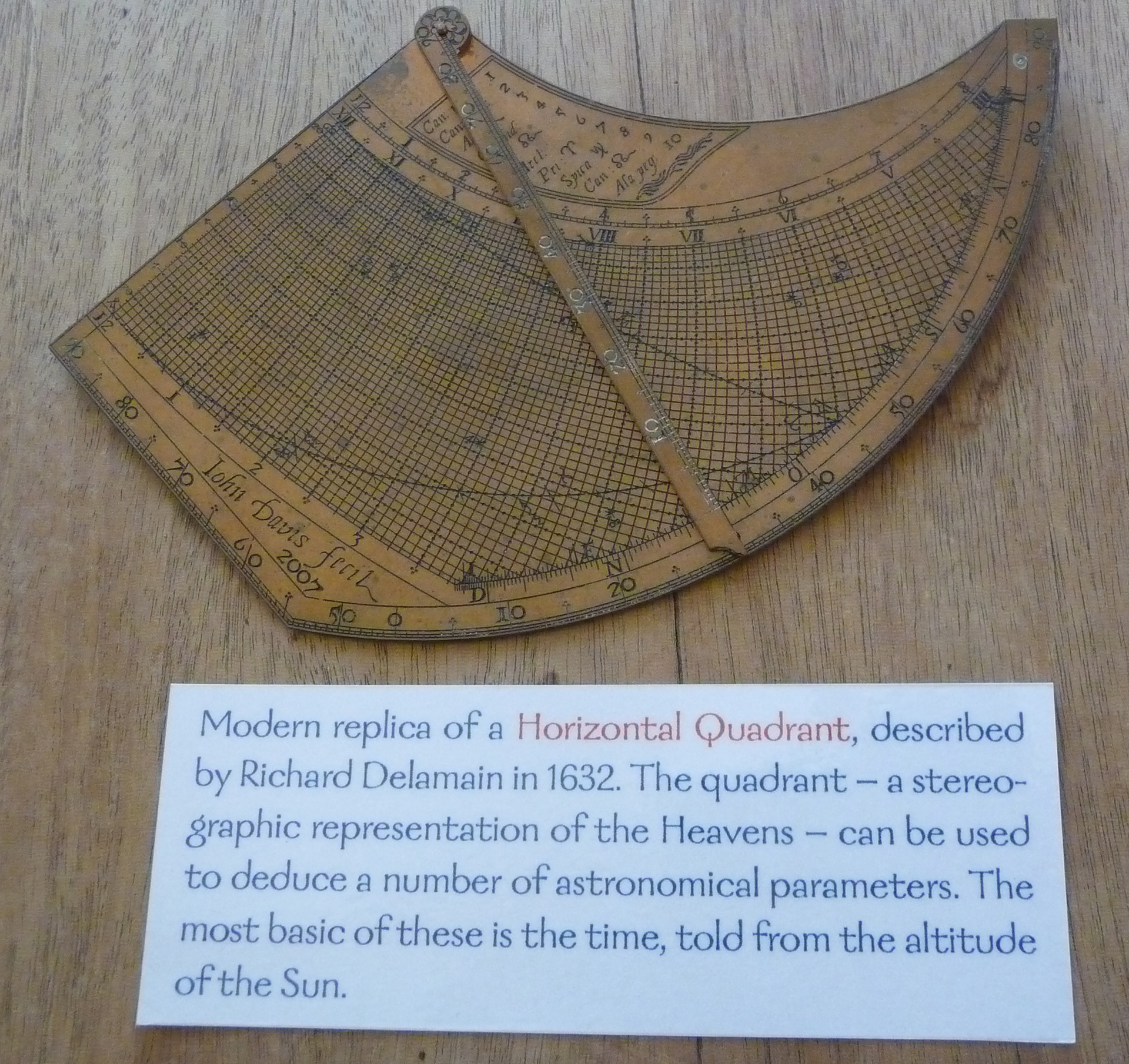
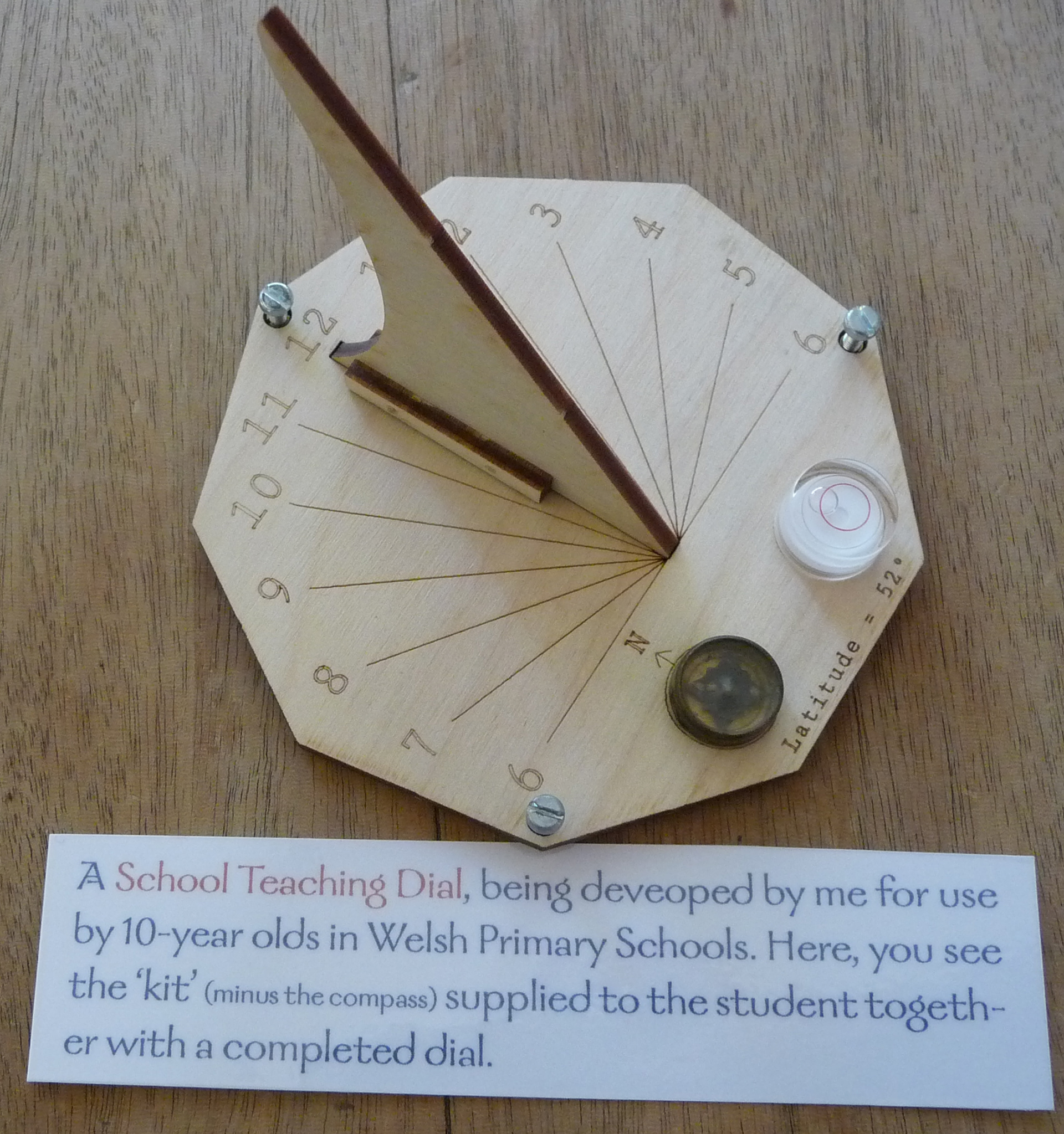
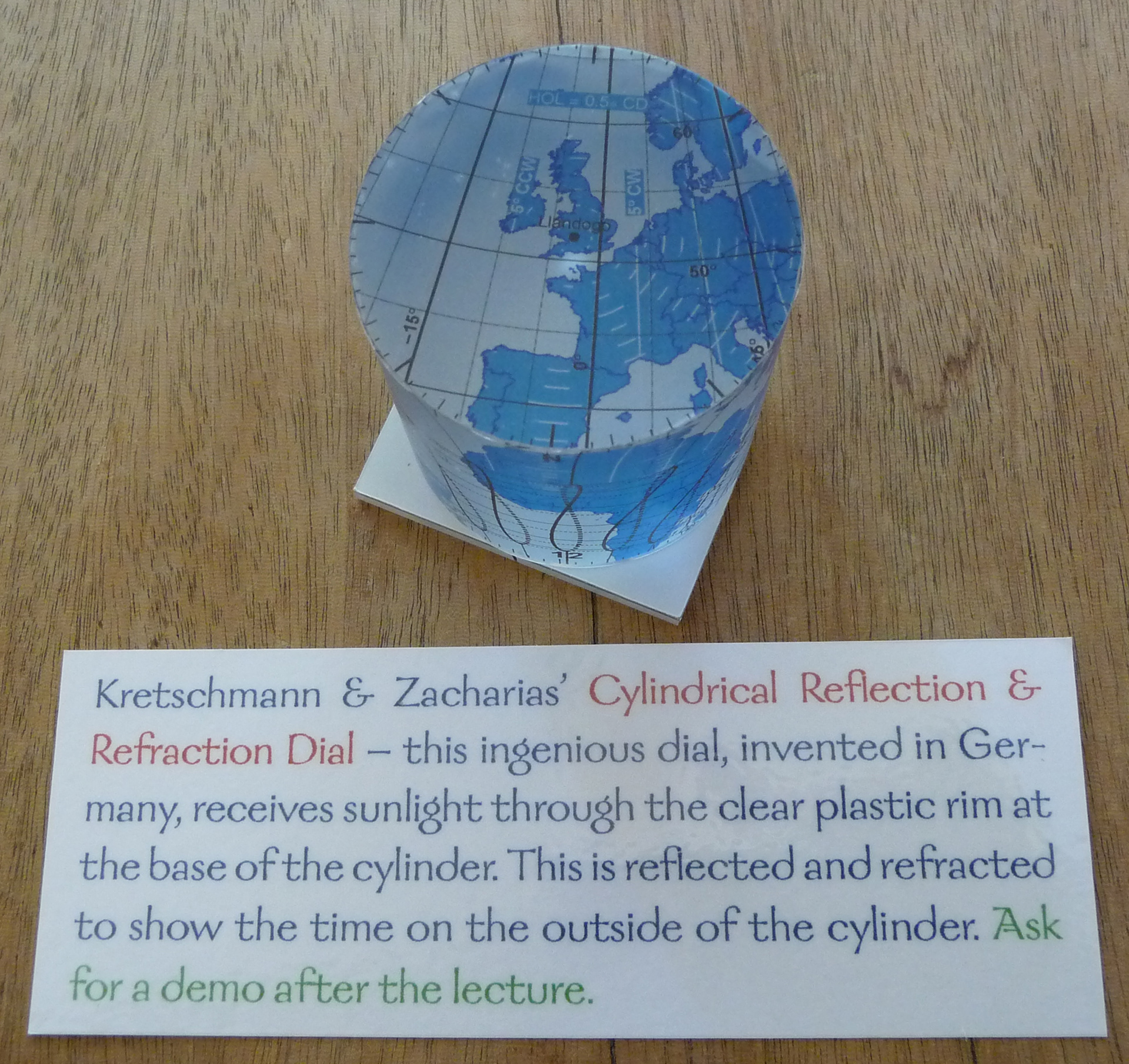
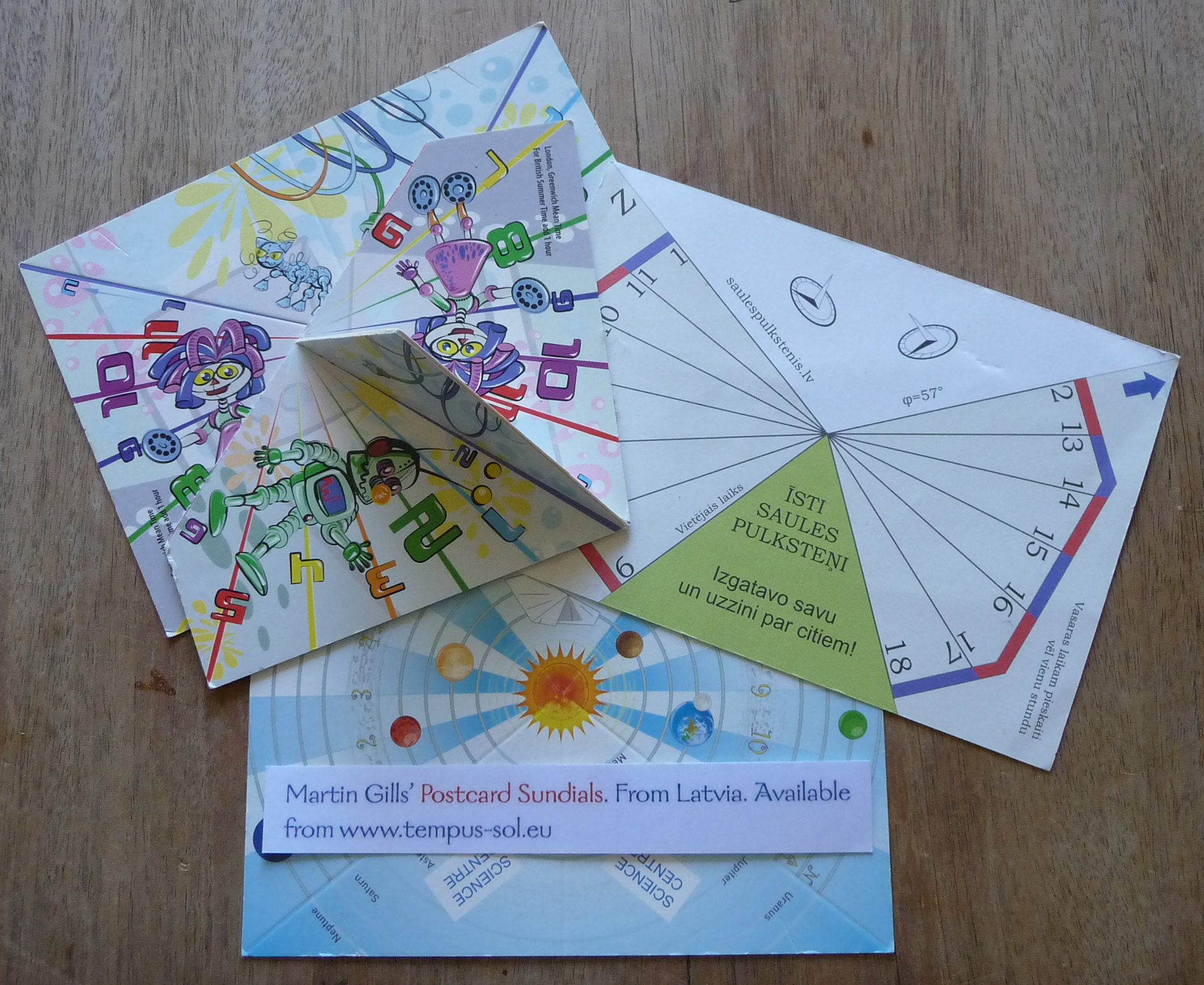
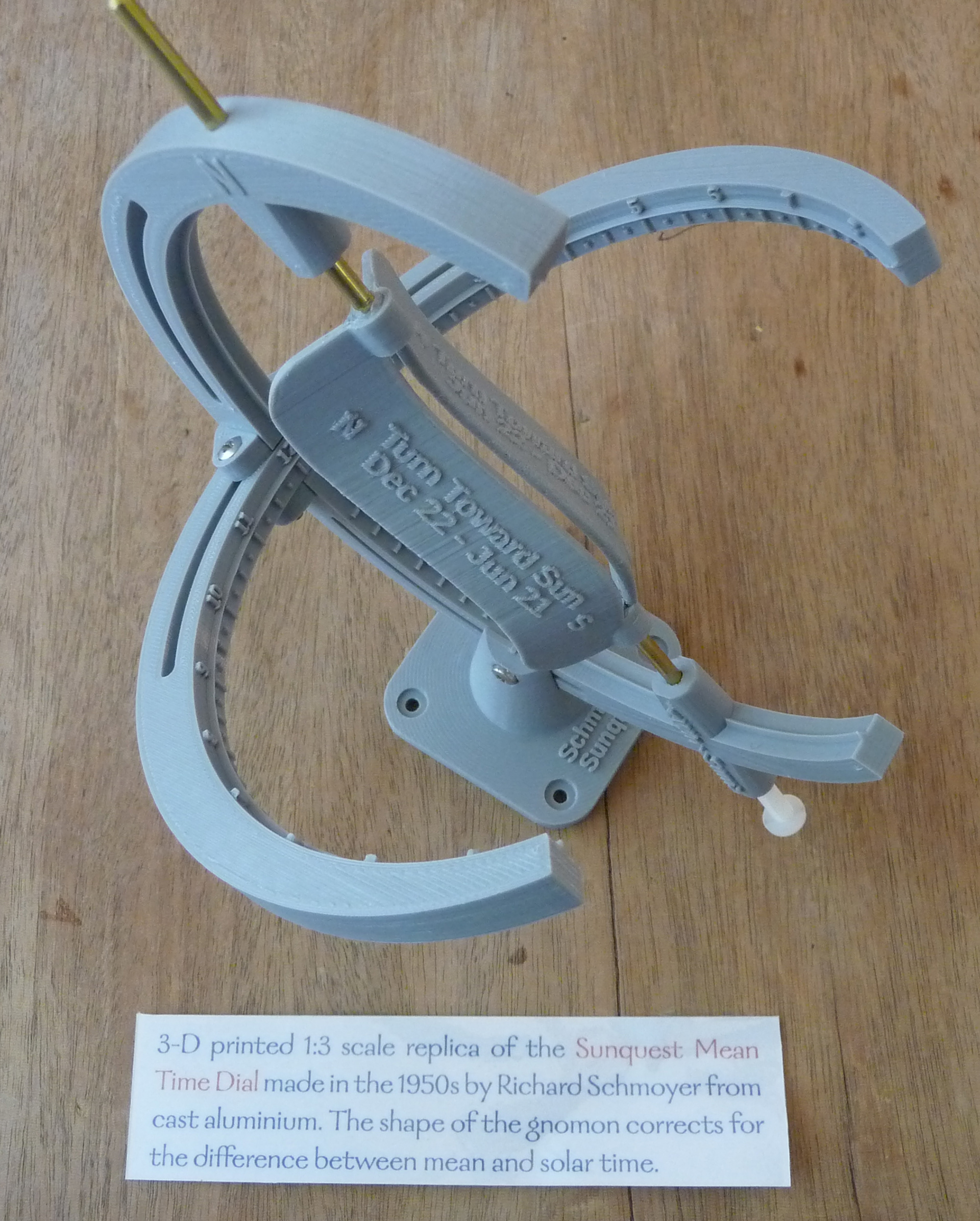
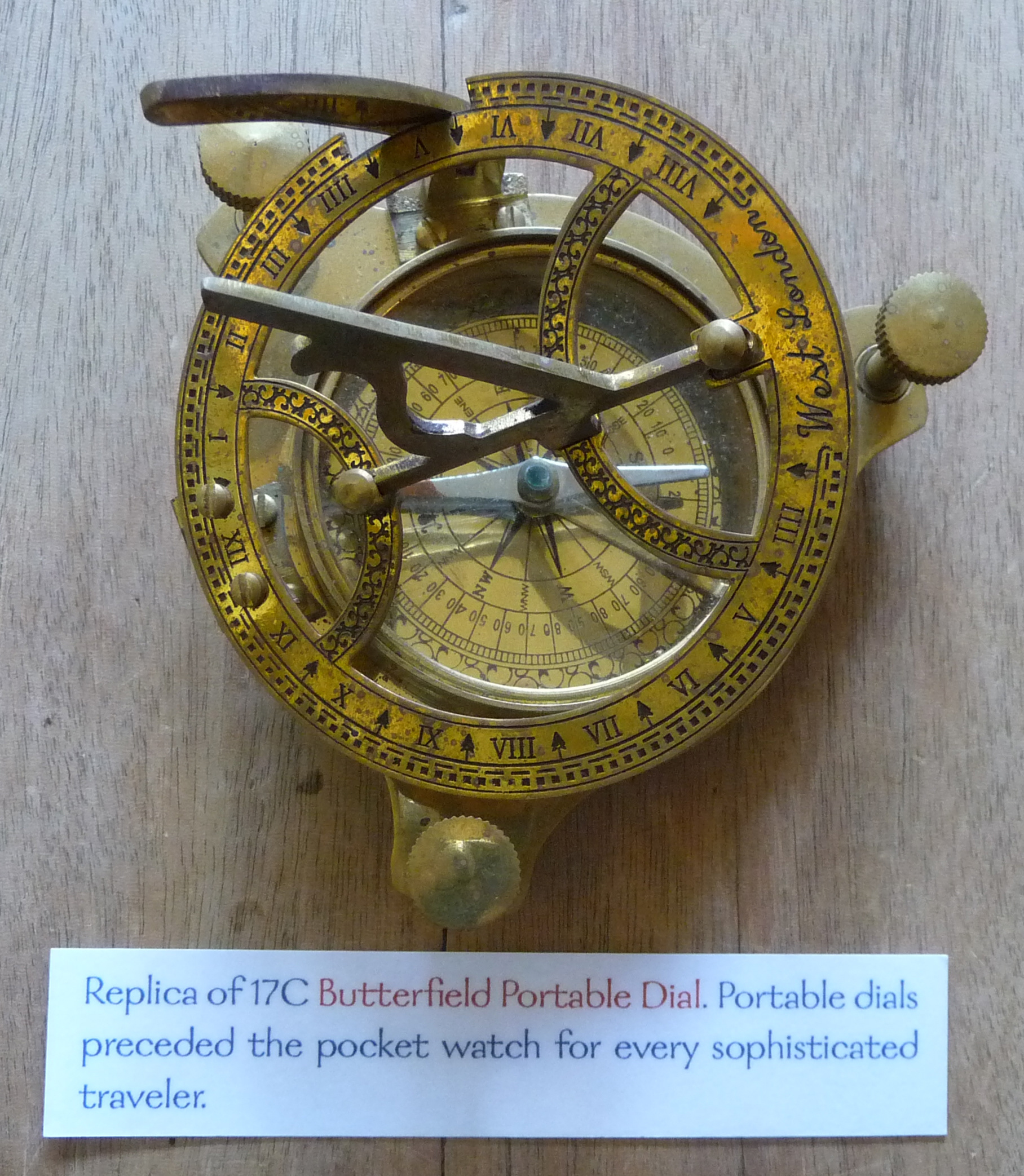
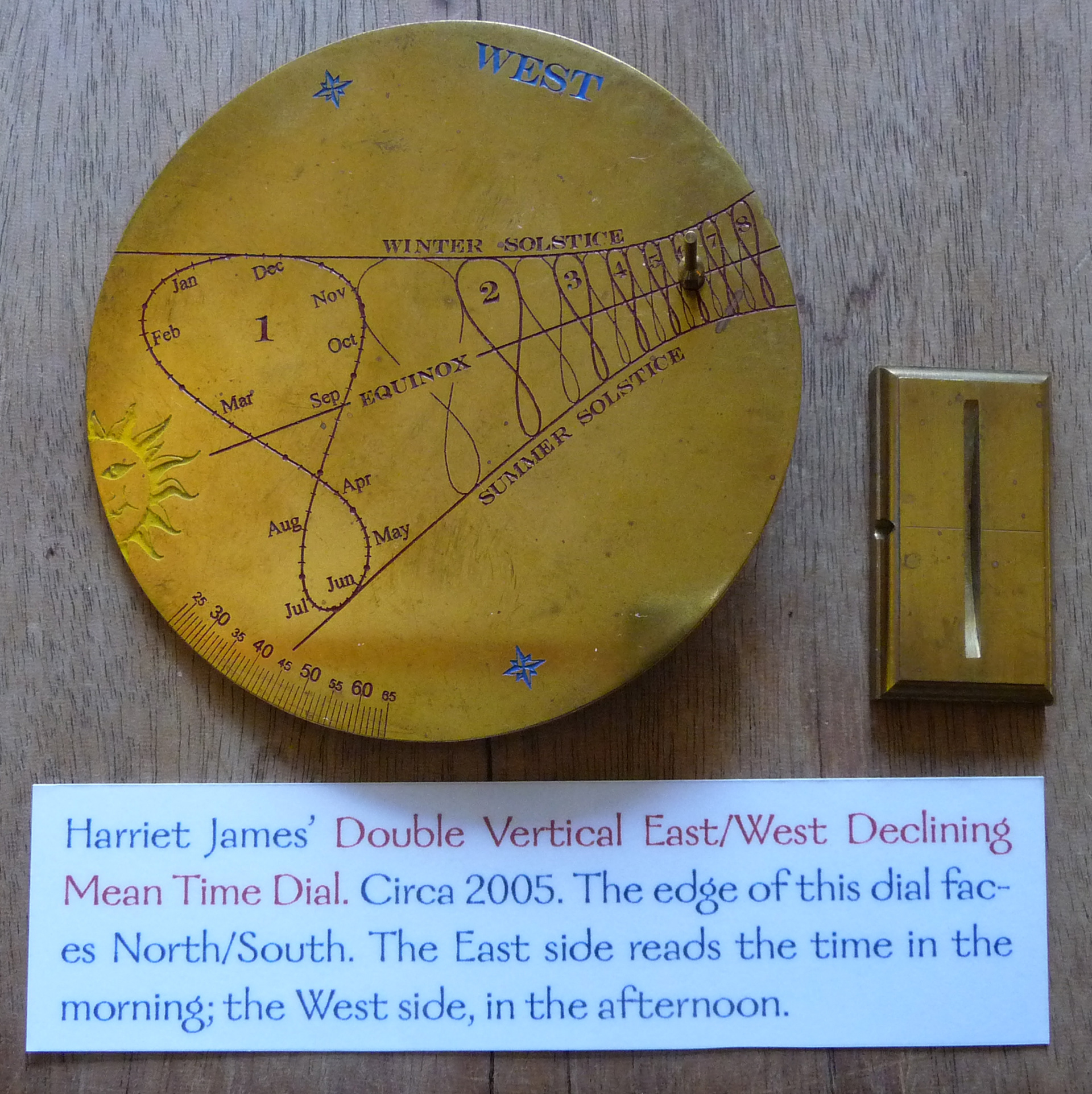

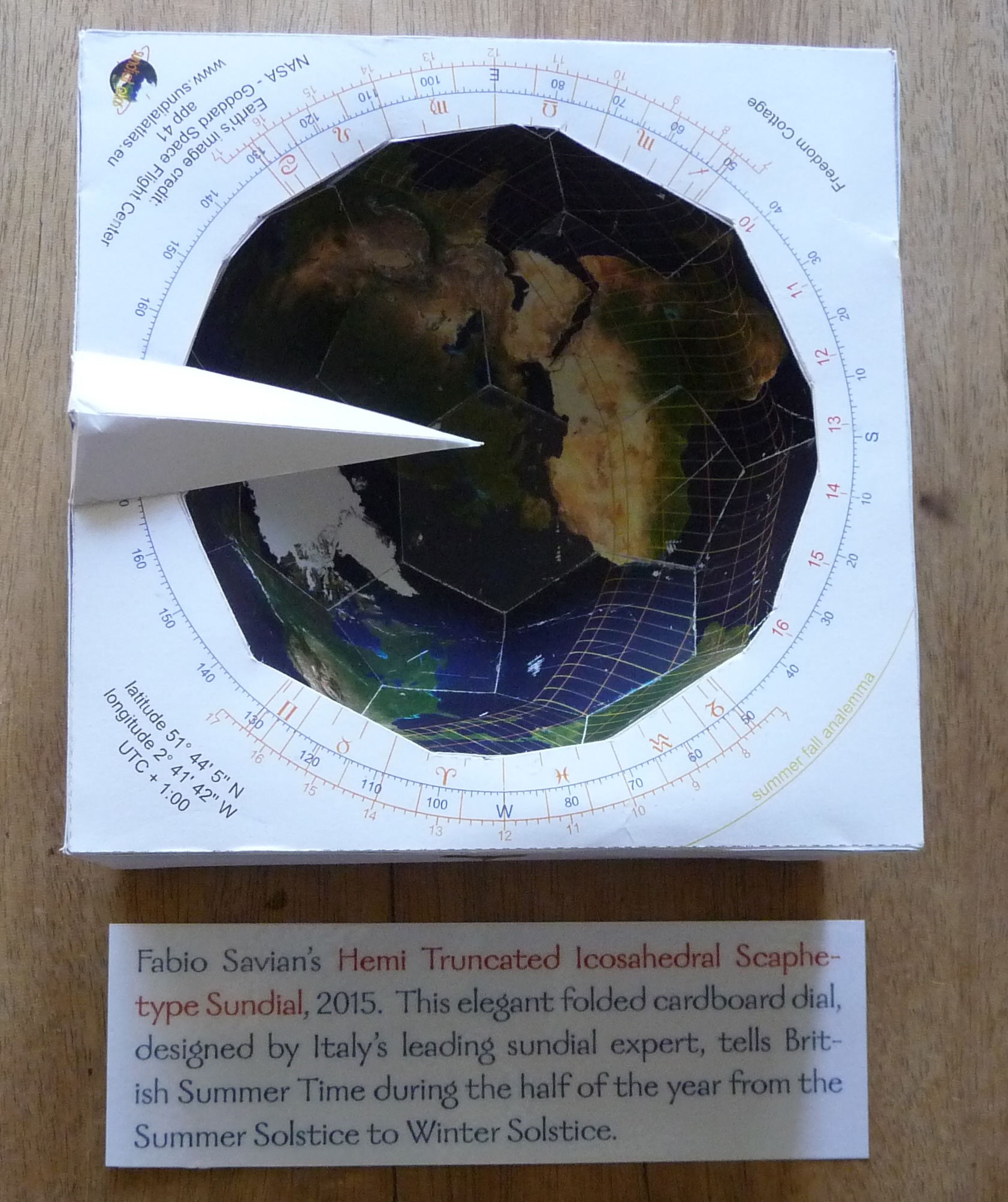
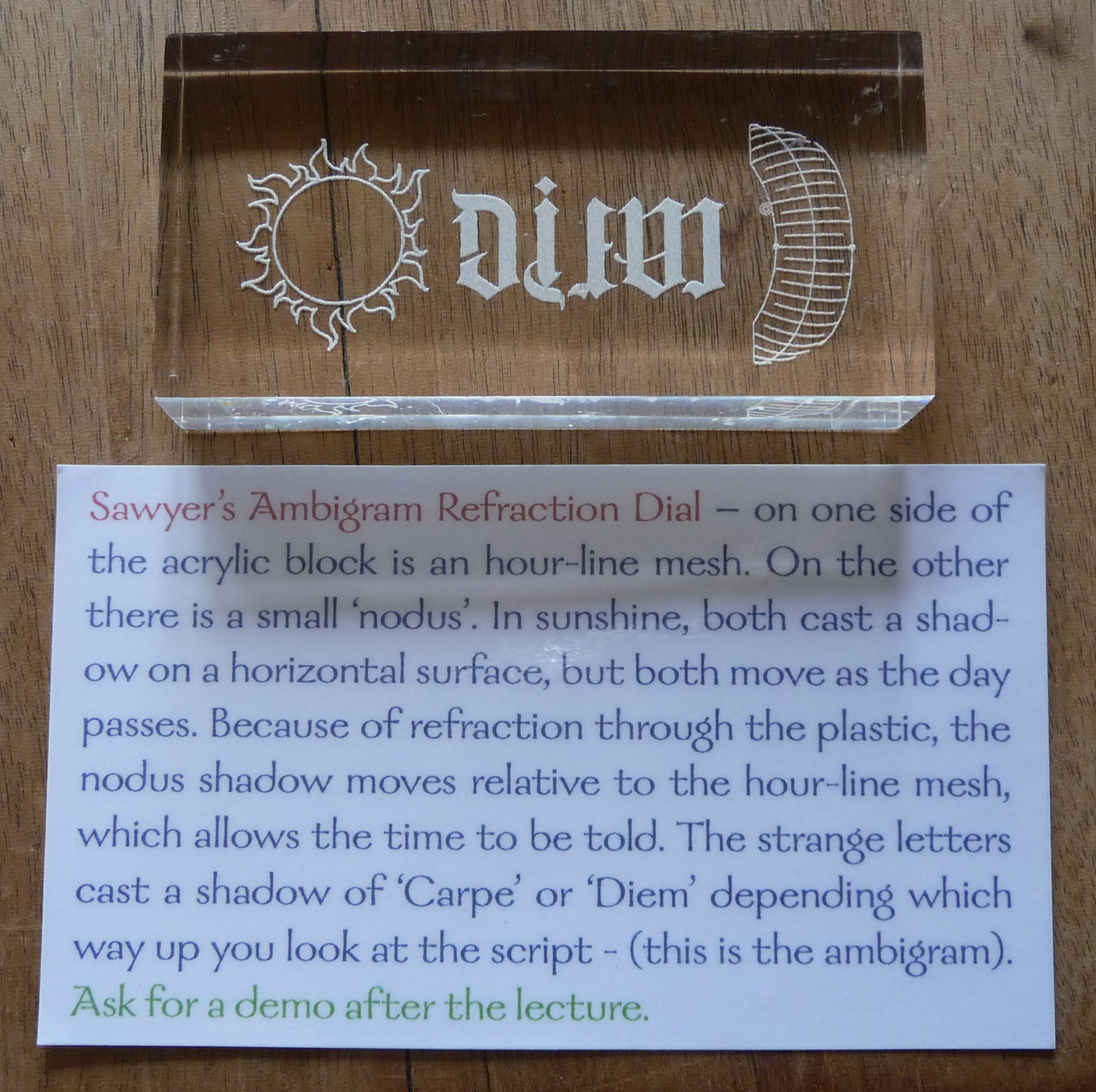
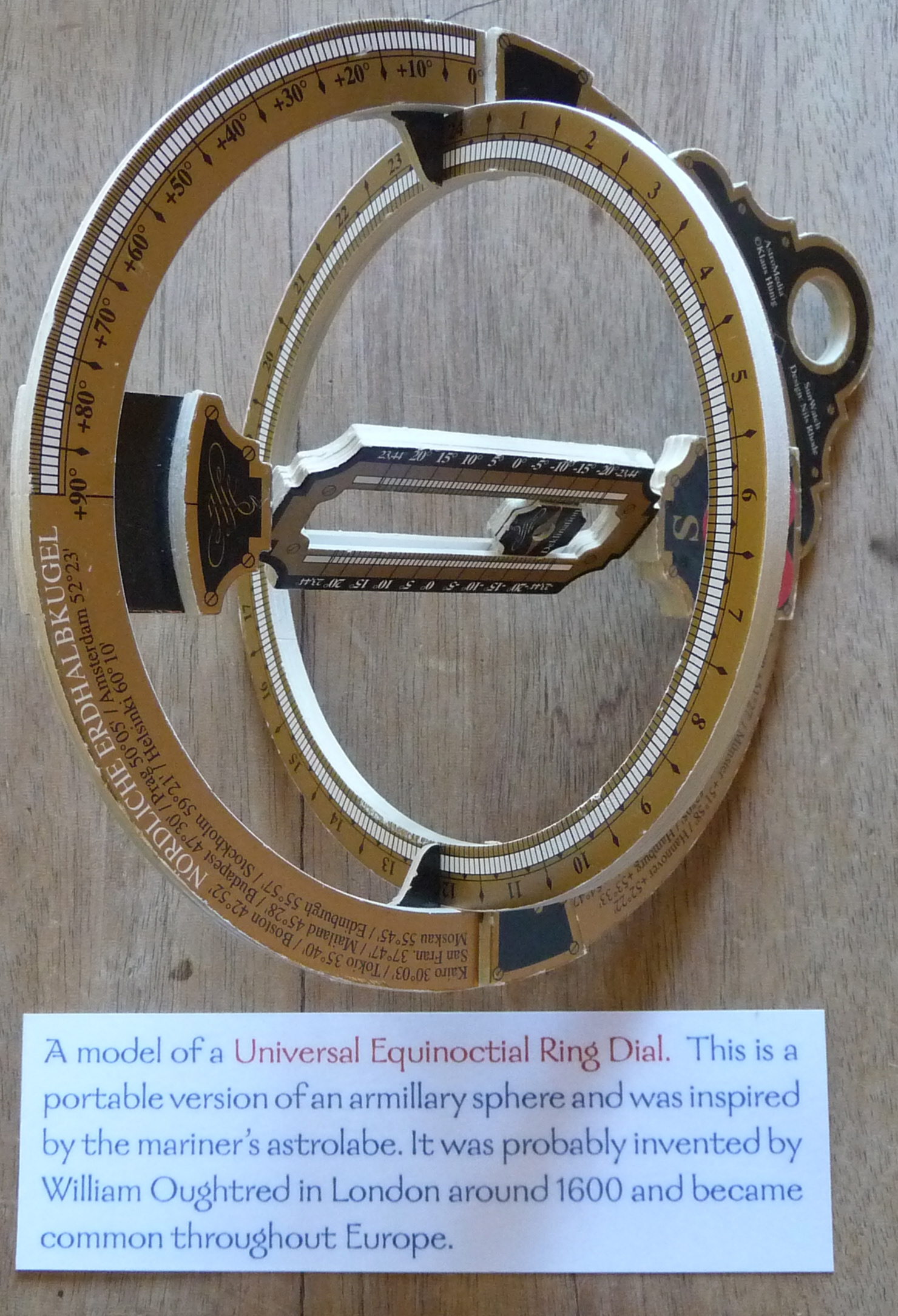
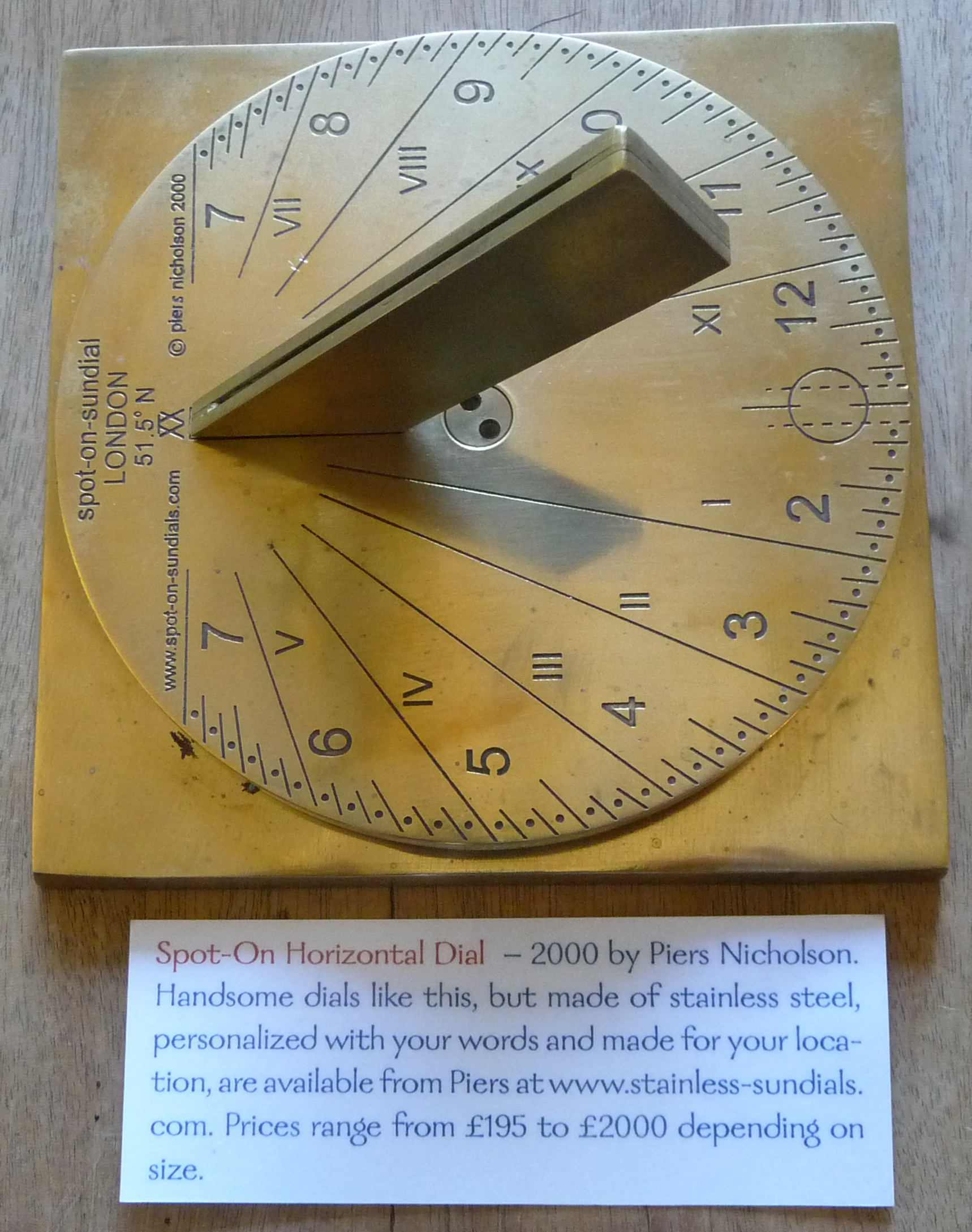


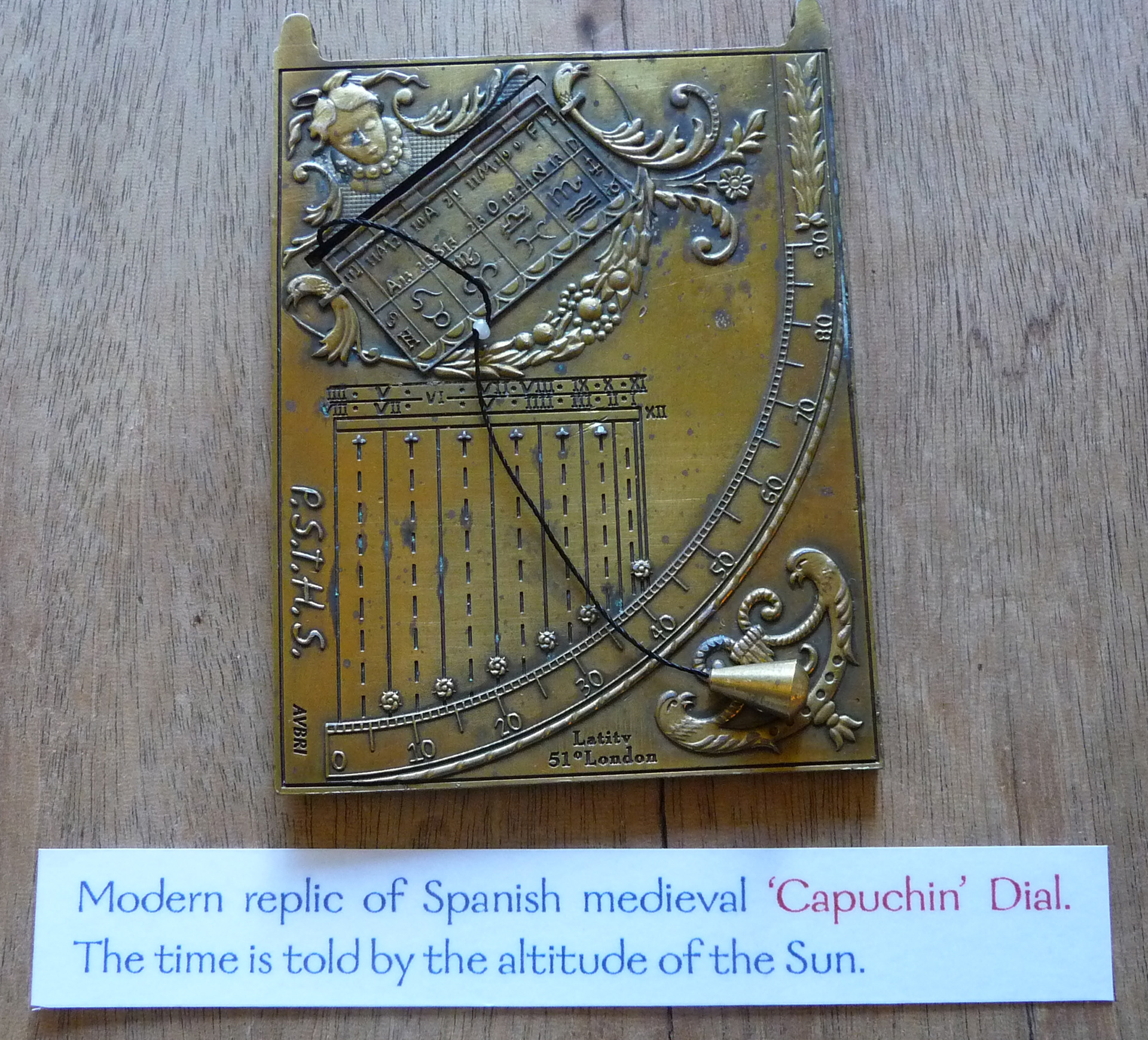
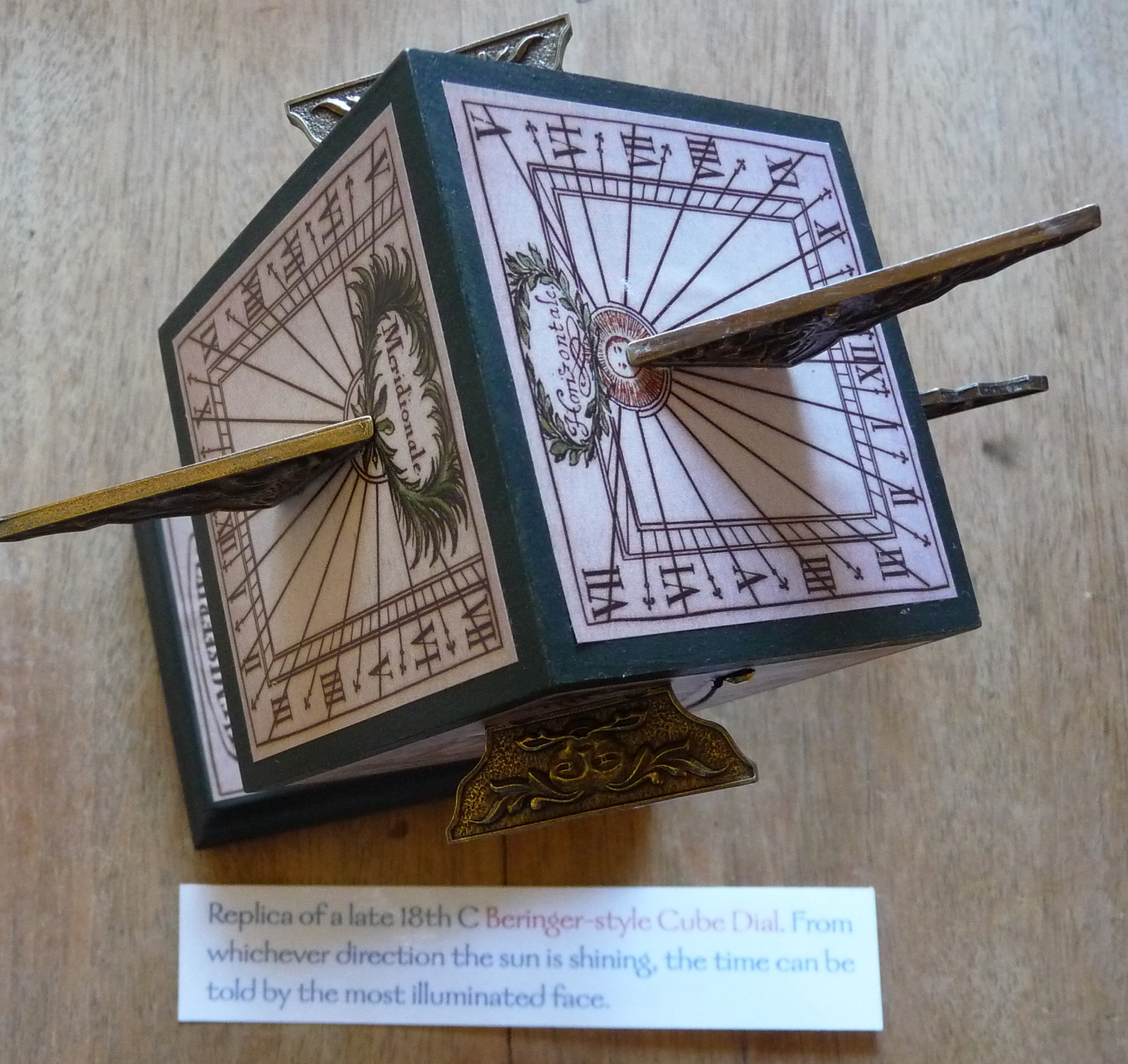

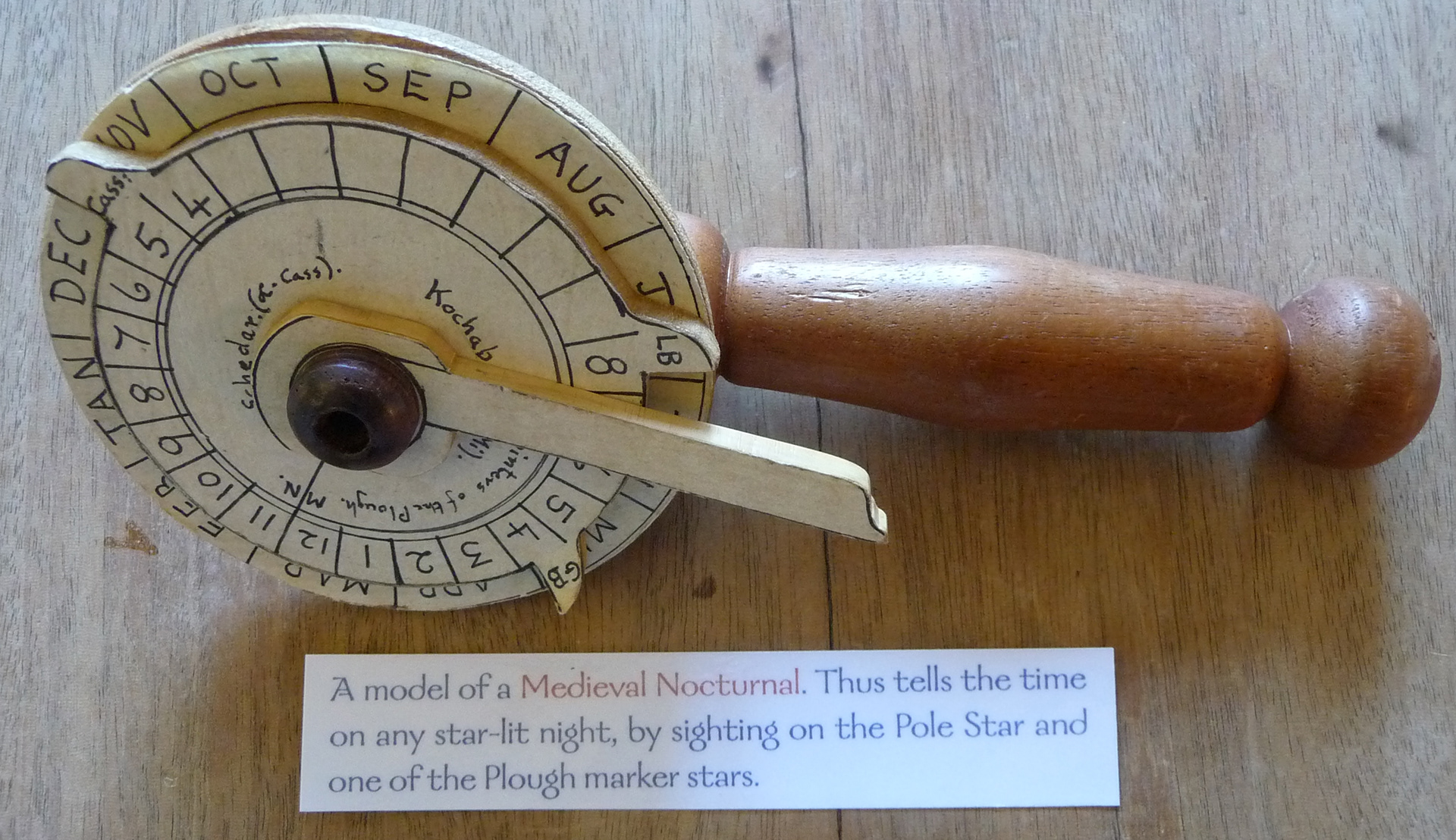





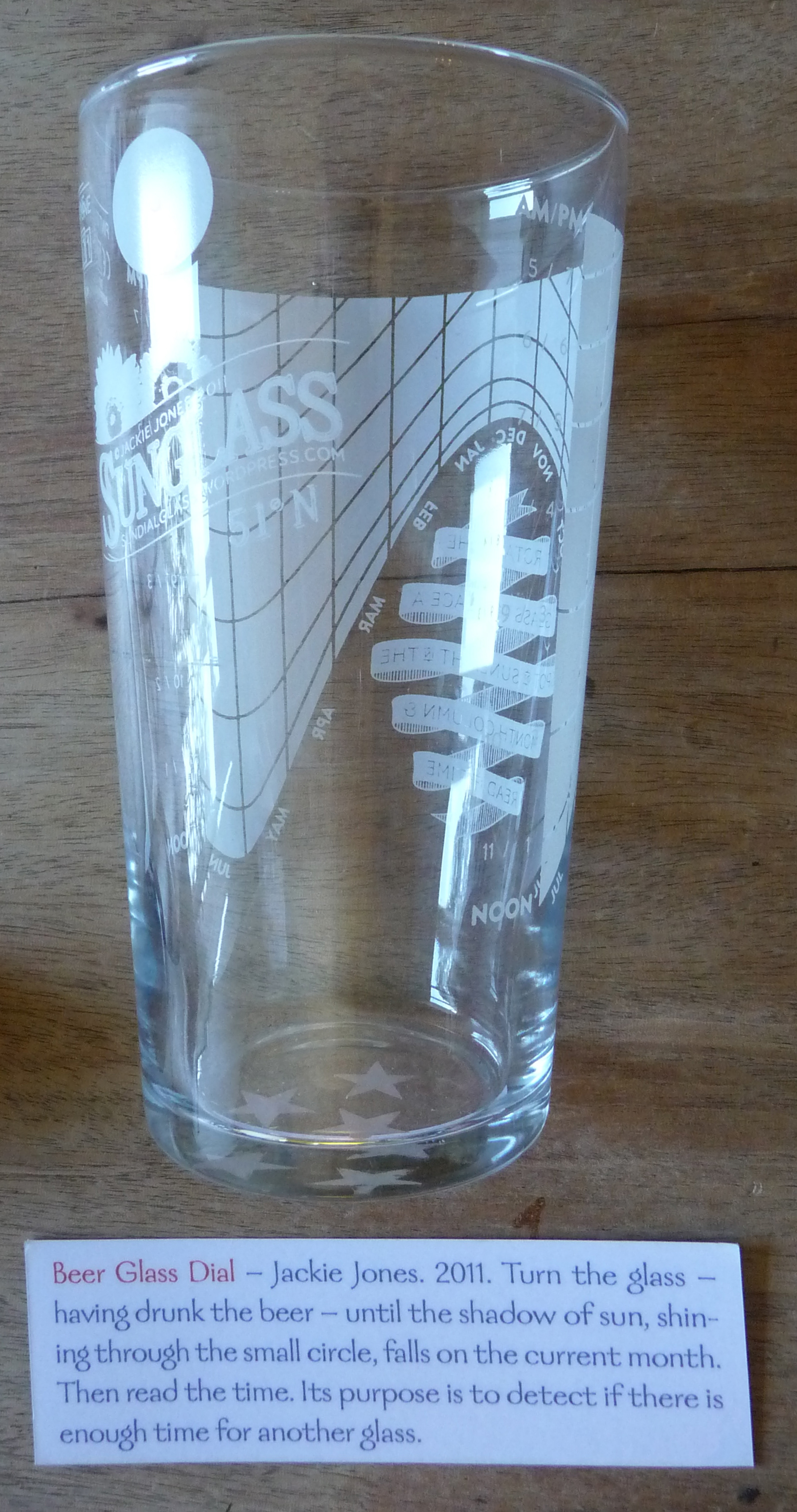
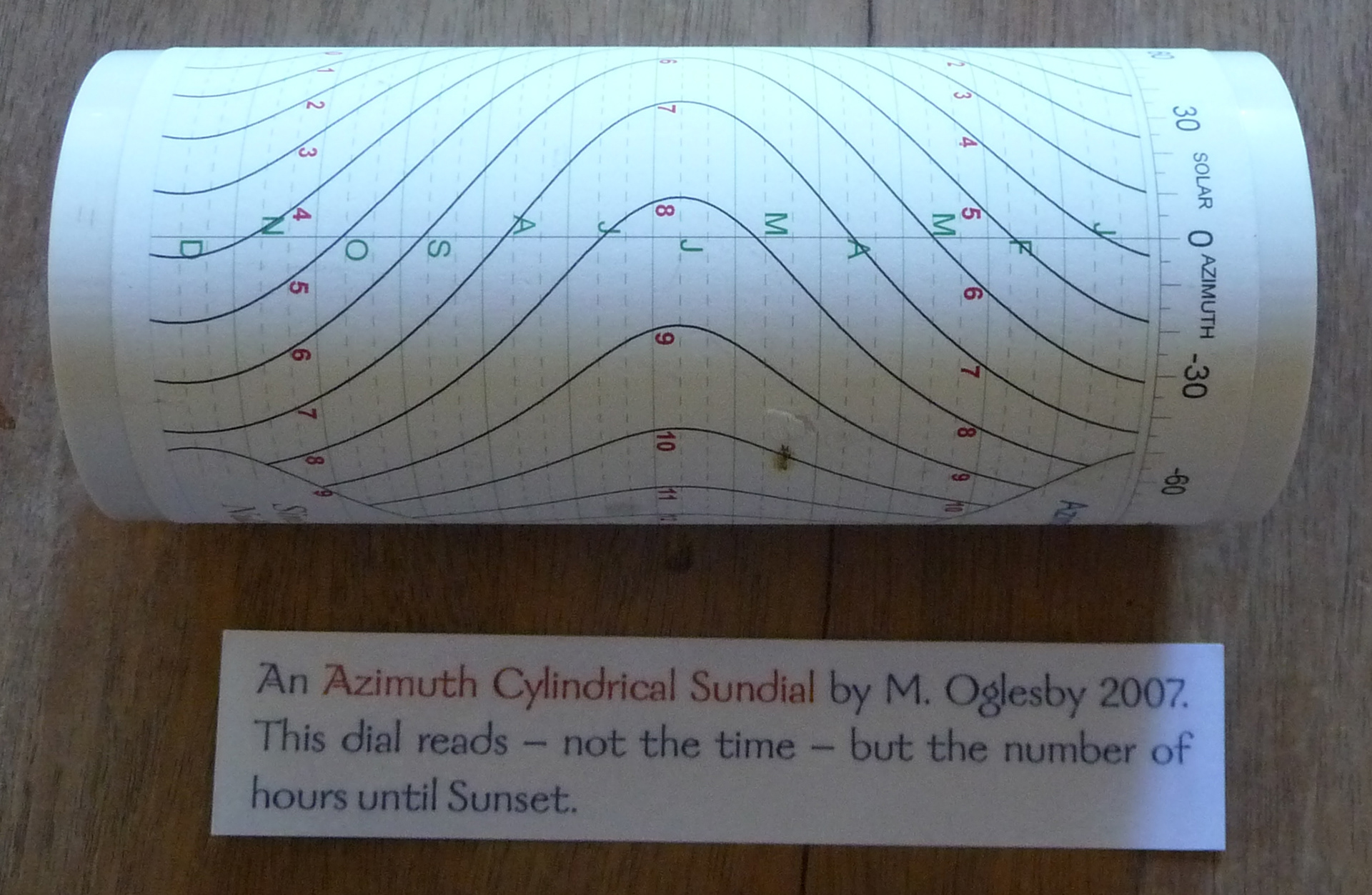




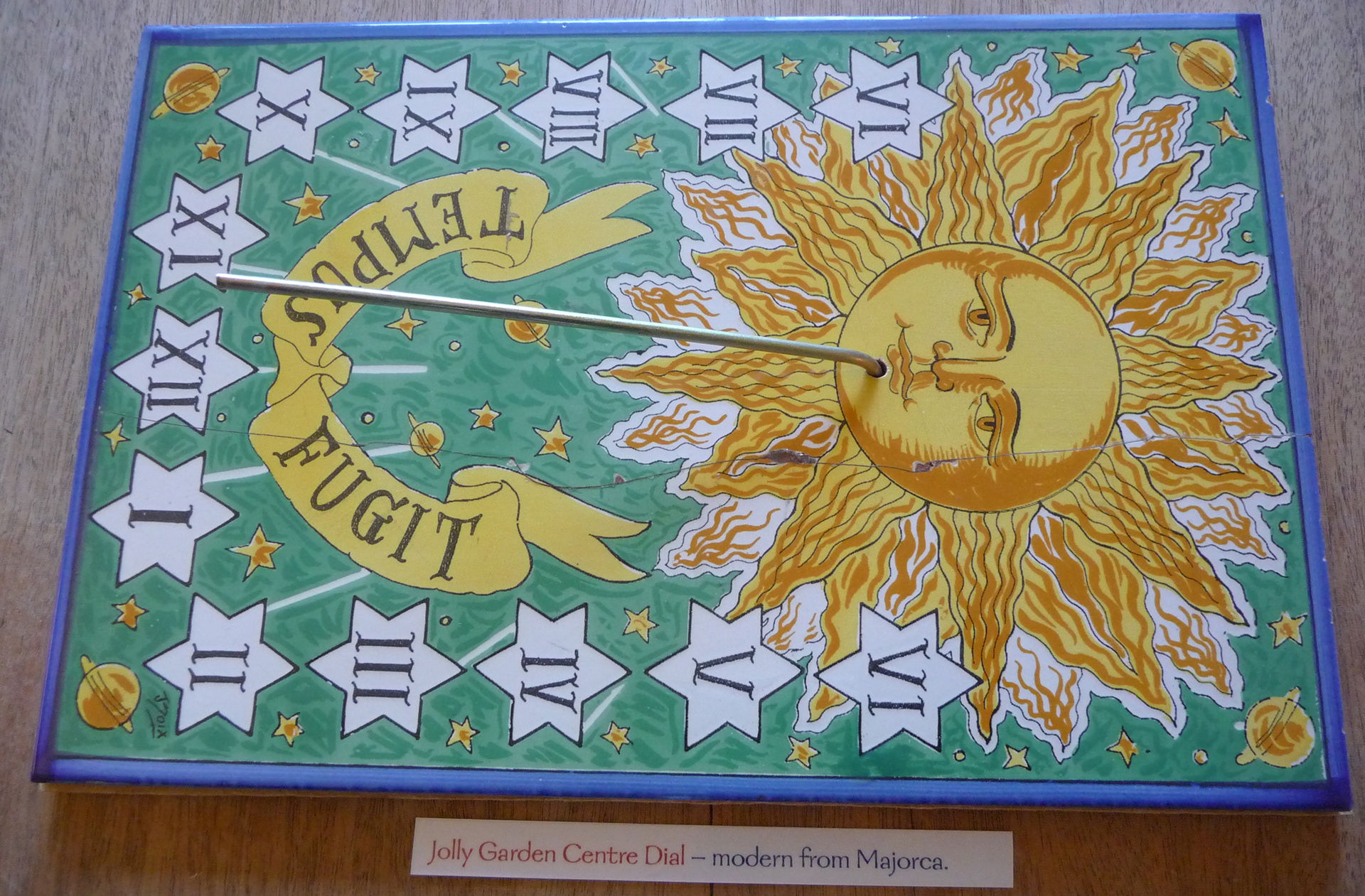
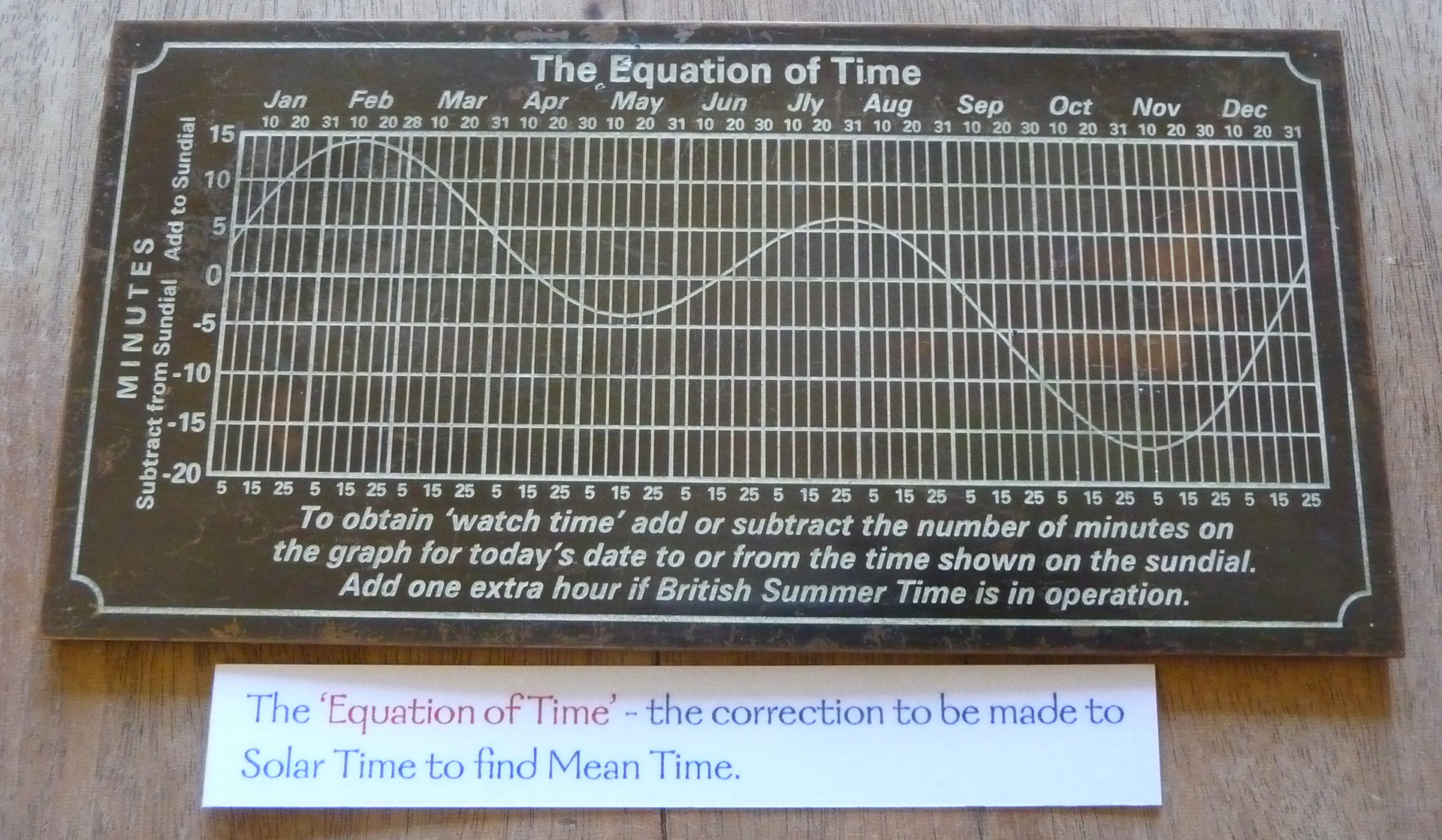



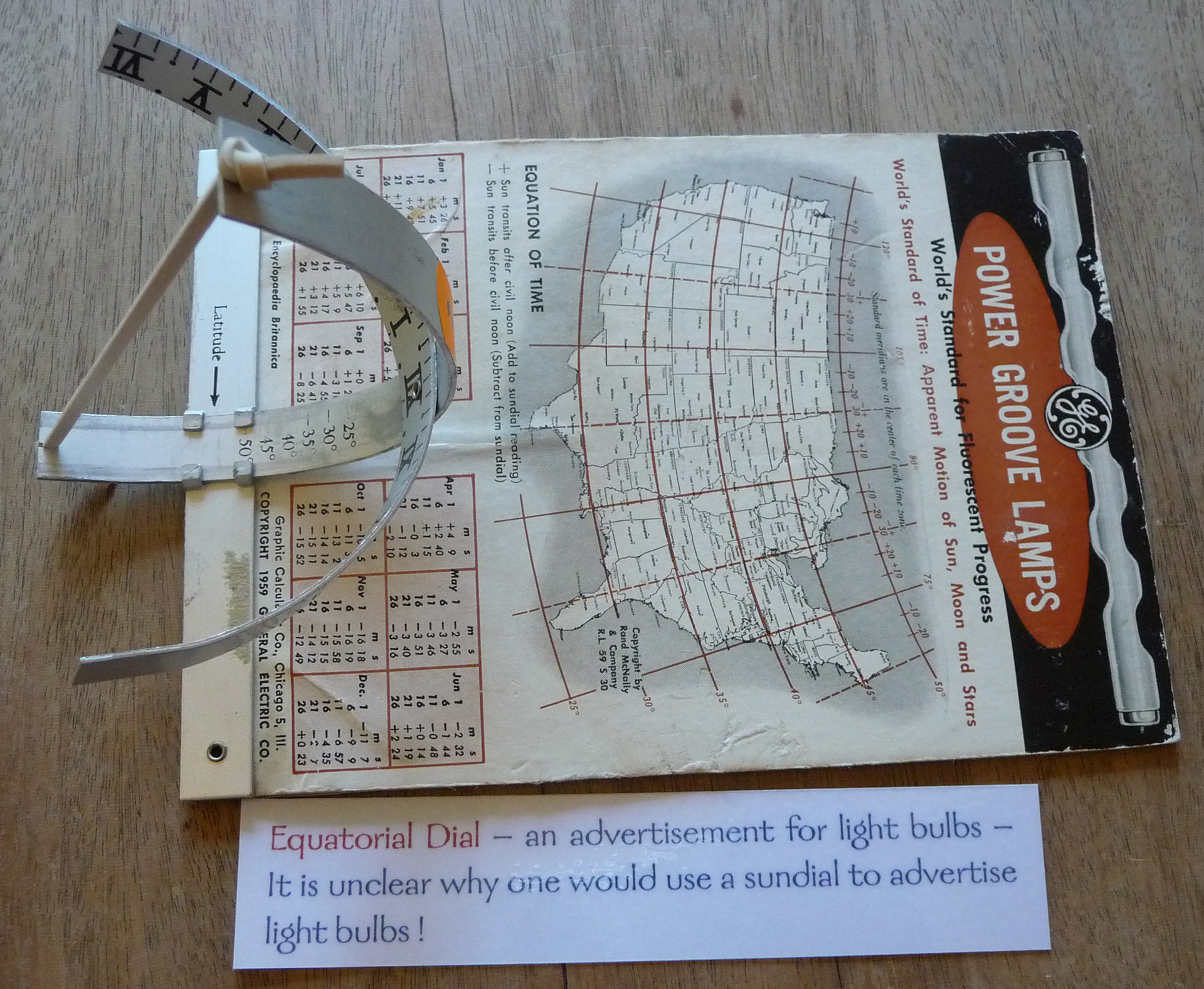
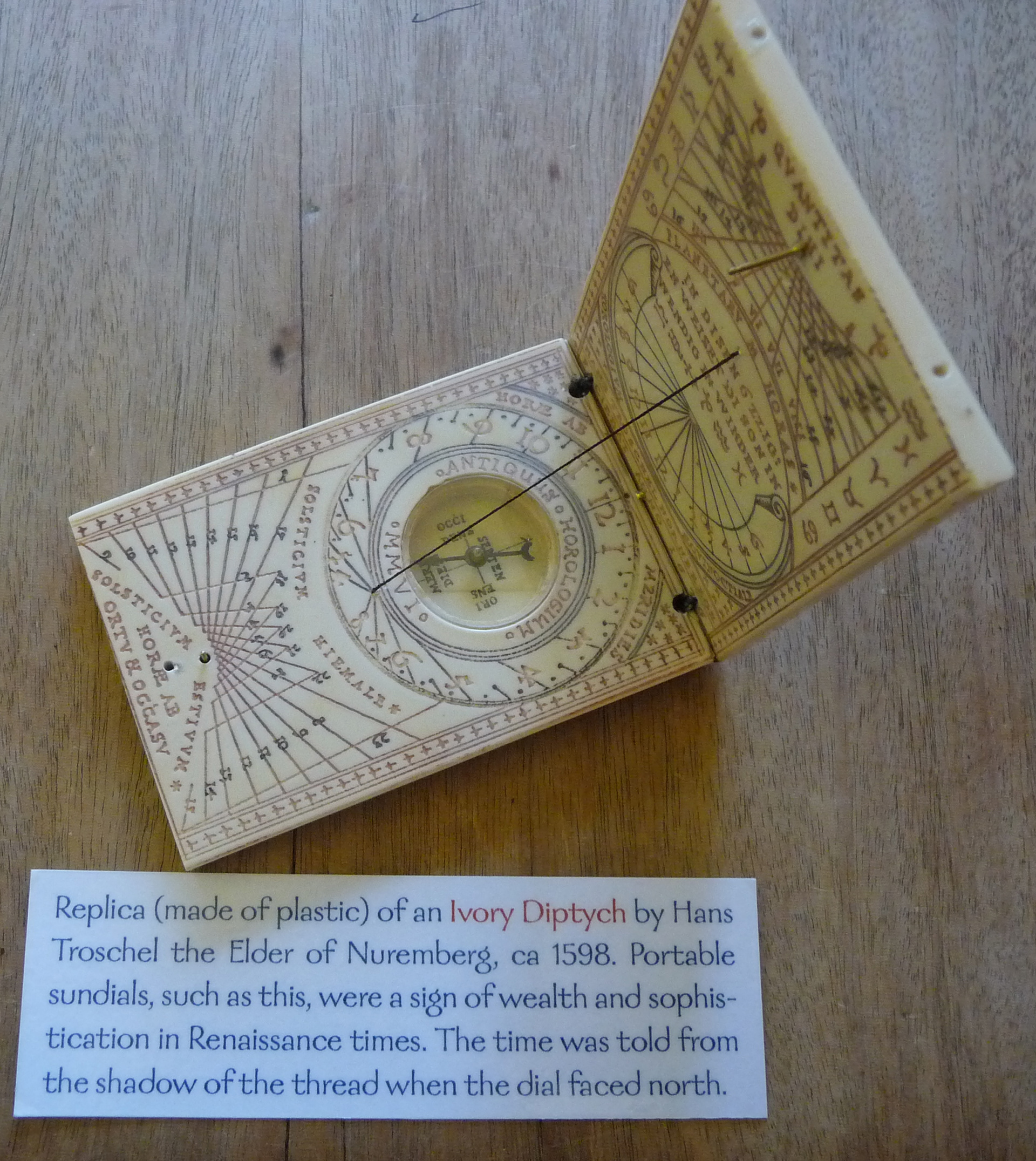

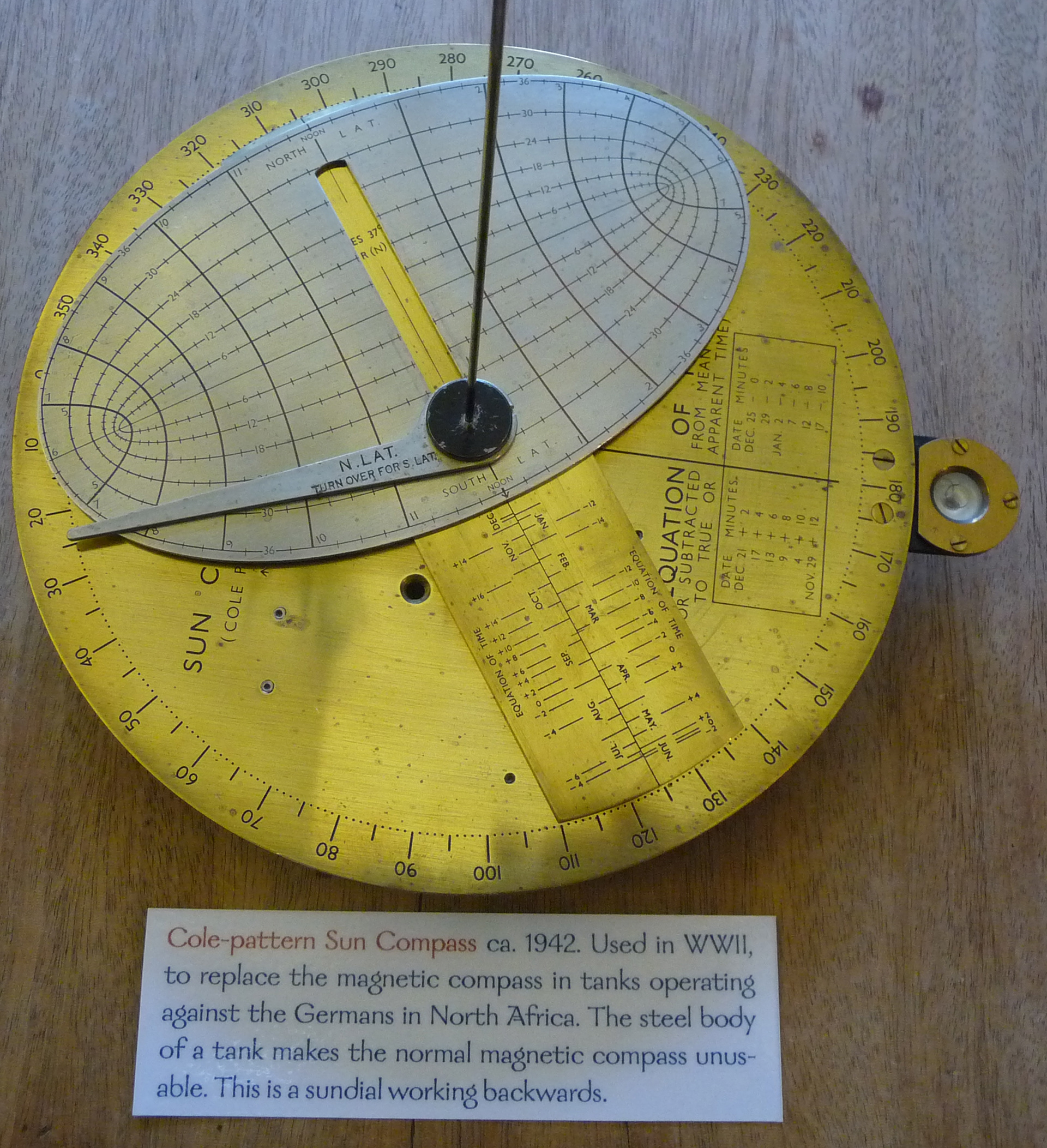
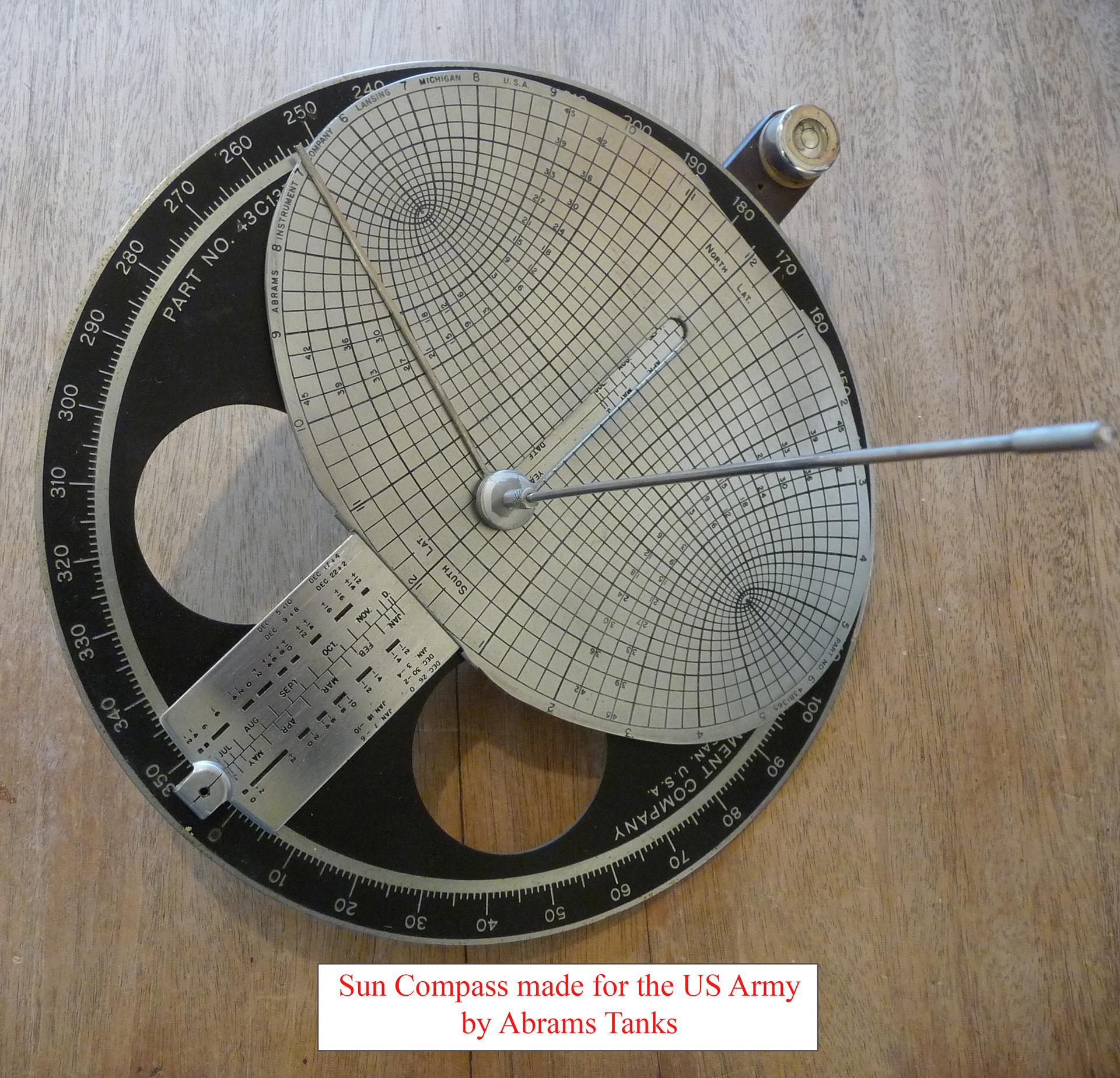


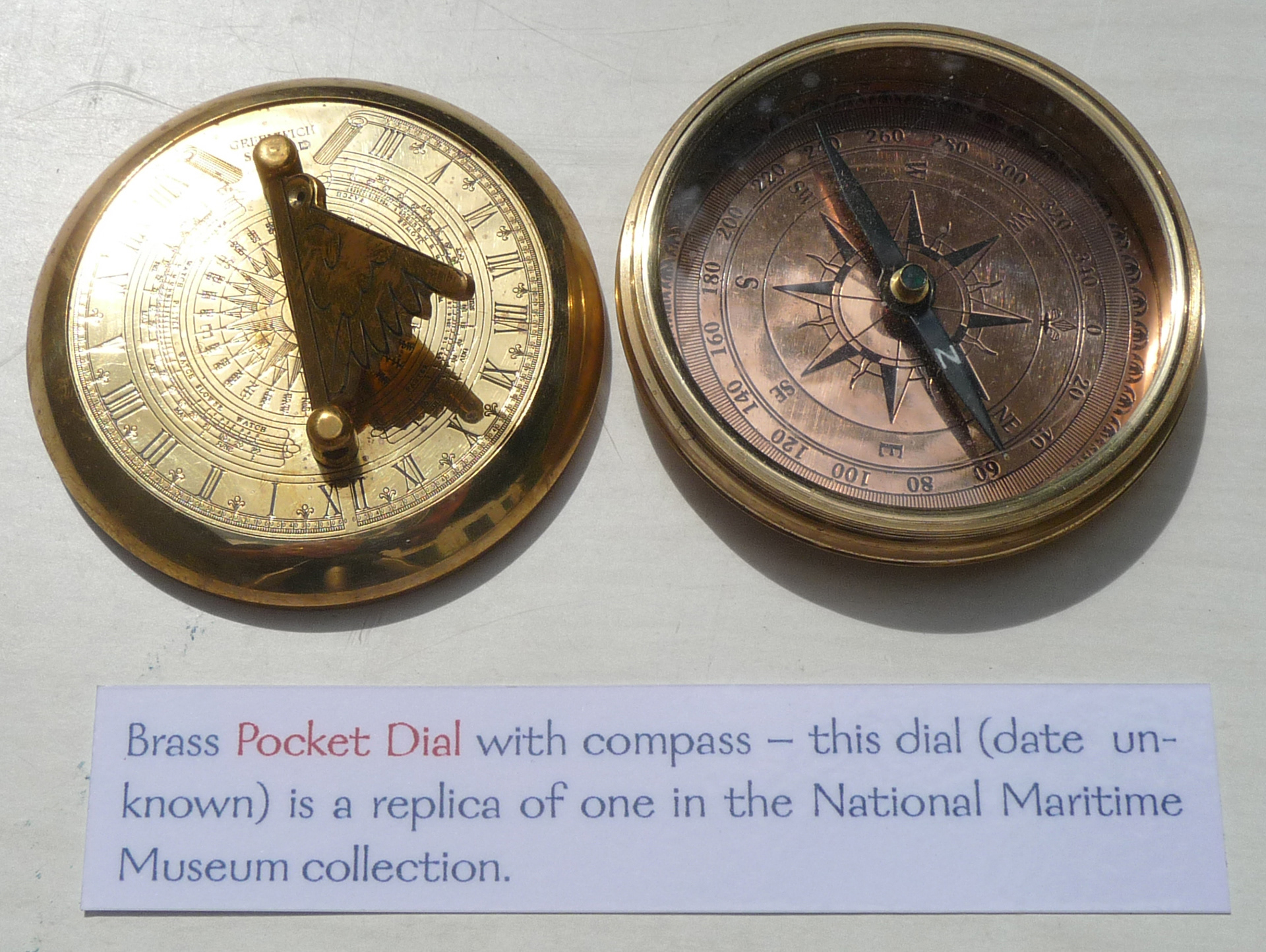
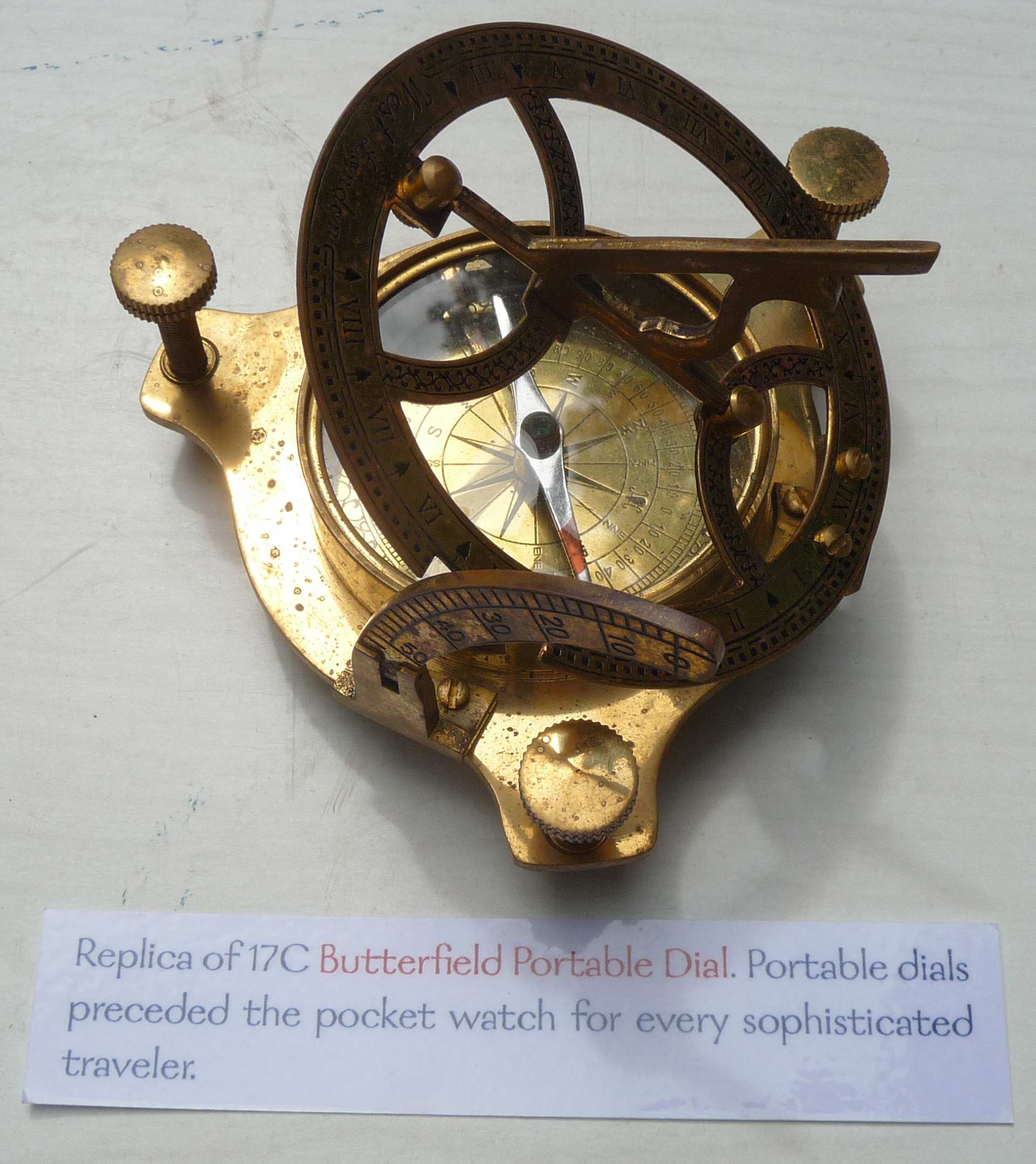

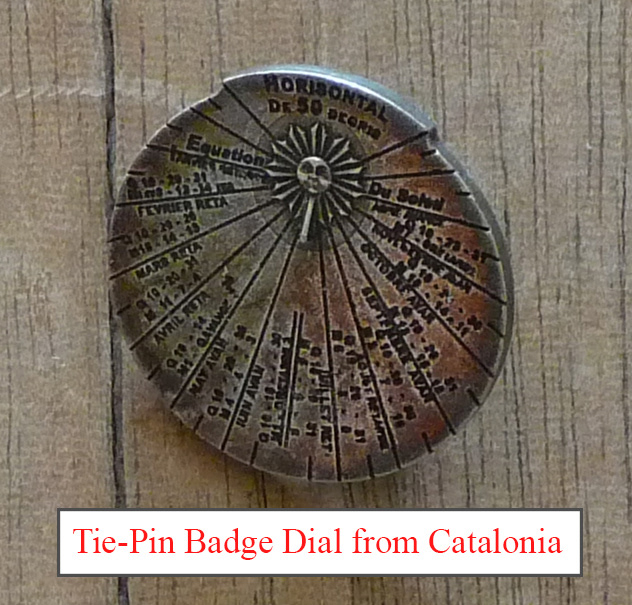

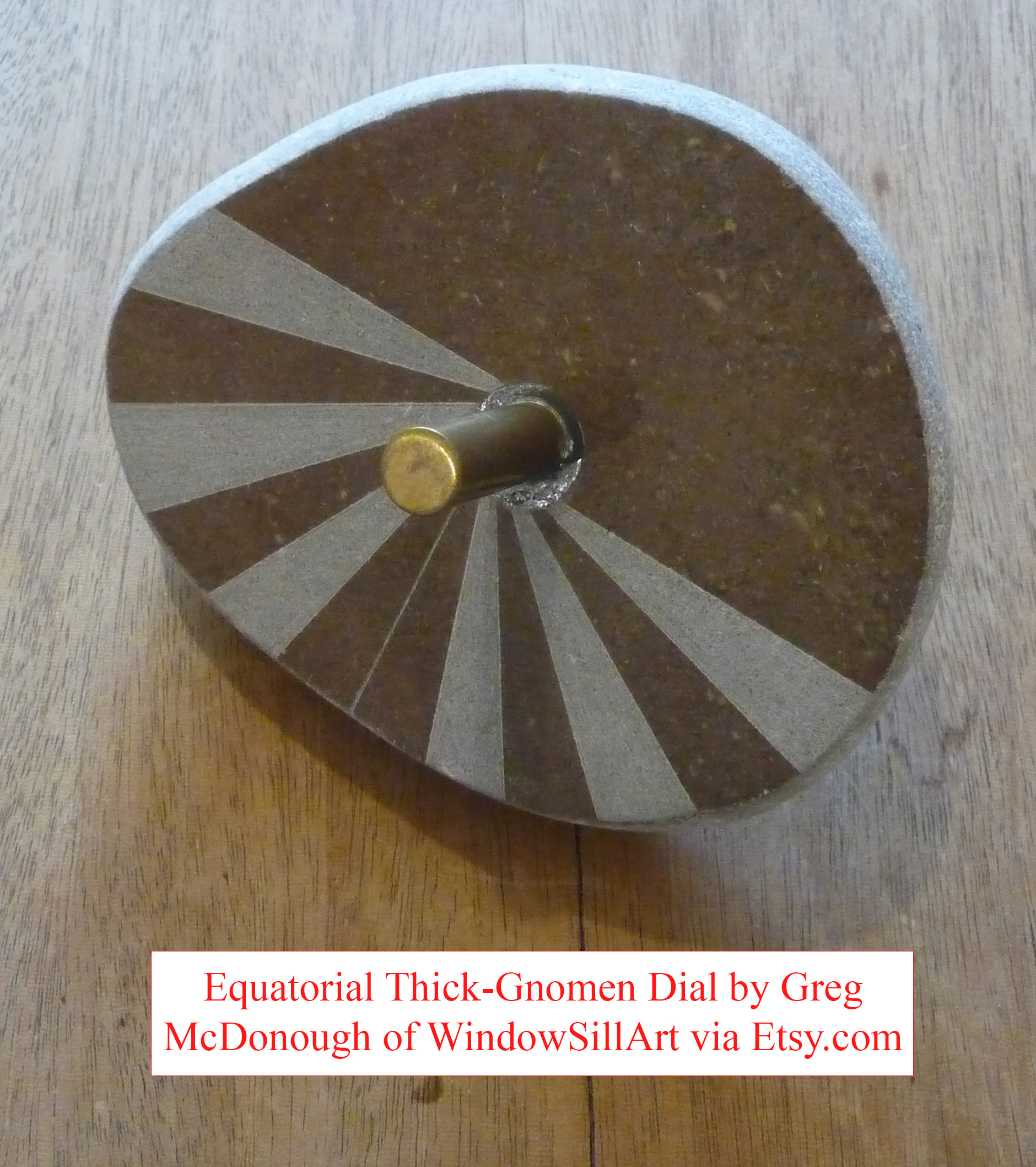
That's Me